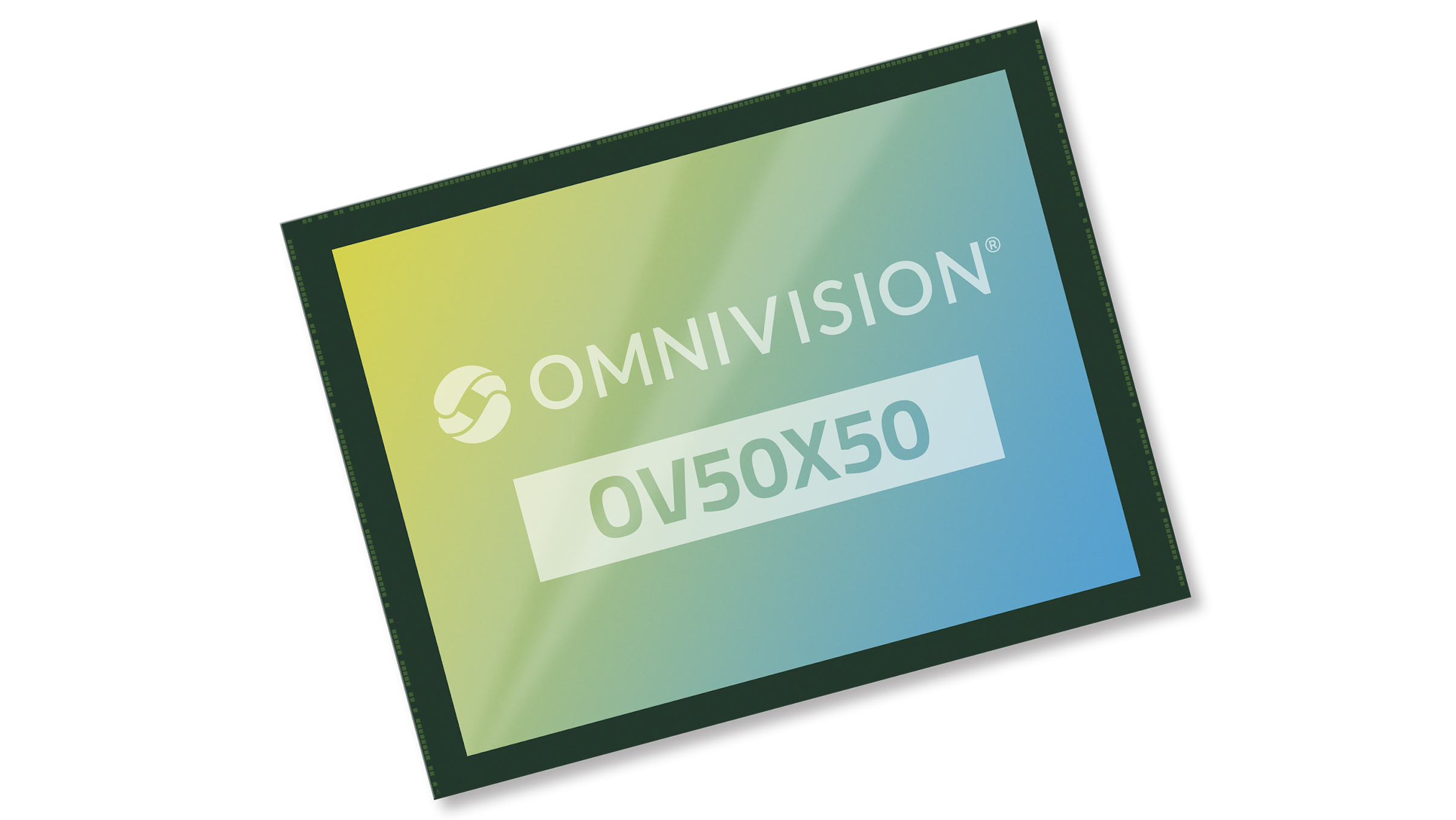The best binoculars In 2025: for astronomy, wildlife, sports fans, and more
Choosing the best binoculars is easy when you know what the specs mean and what to look for
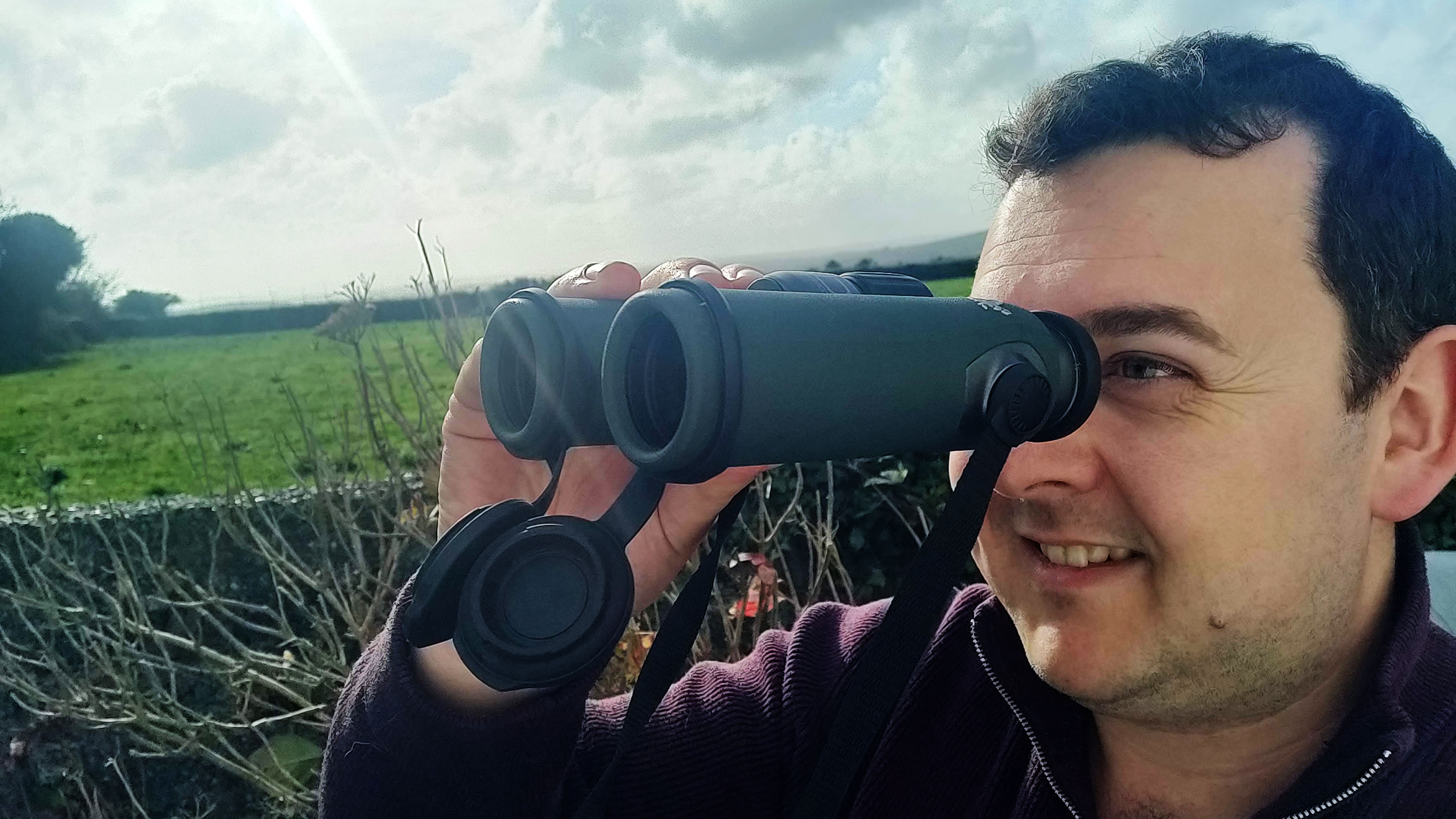
Growing up in the countryside with binoculars almost always in hand, I spent countless hours watching wildlife, spotting birds, and immersing myself in nature. If there’s one thing I’ve learned, it’s how invaluable a good pair of binoculars can be—whether for capturing the perfect wildlife shot, enjoying a peaceful day of birdwatching, sightseeing, or even stargazing on a clear night.
Years of hands-on experience have taught me that choosing the right binoculars isn’t just about brand names or price—it’s about understanding how you’ll use them, what you’re comfortable carrying, and what fits your budget. While high-end models can be expensive, the good news is that you don’t need to spend a fortune to find a pair that suits your needs.
For an all-around top pick, I highly recommend the Celestron Nature DX ED 12x50—versatile and reliable for most situations. If you need long-distance viewing with exceptional stability, the Canon 10x42L IS WP with built-in image stabilization is a game-changer. And for beginners or those looking for an affordable, easy-to-use option, the Nikon Prostaff P3 8x42 offers excellent quality at a great price.
In this guide, I’ve focused on binoculars that provide clear, bright, and steady images while remaining reasonably priced. Below, you’ll find my top recommendations, carefully selected to match different needs and budgets. Whether you’re an experienced nature enthusiast or just starting out, I’m confident you’ll find the perfect pair to enhance your adventures.
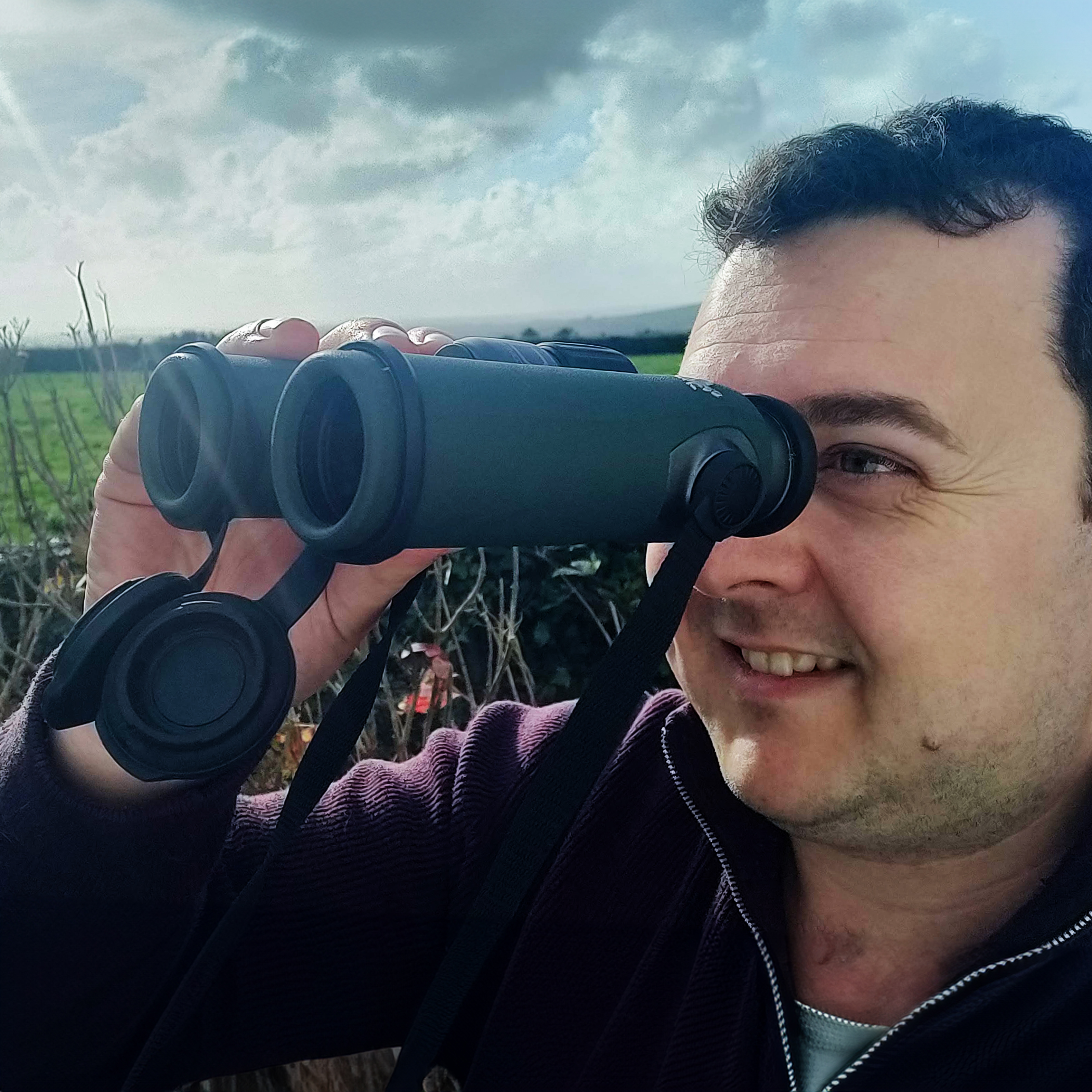
Sebastian has been a Pro photographer for nearly two decades, but he has also been a big country sportsman in his lifetime who can often be found in or around the shooting field, sailing on the open sea, or taking part in other country pursuits – usually with a pair of binoculars in his hand.
The Quick List
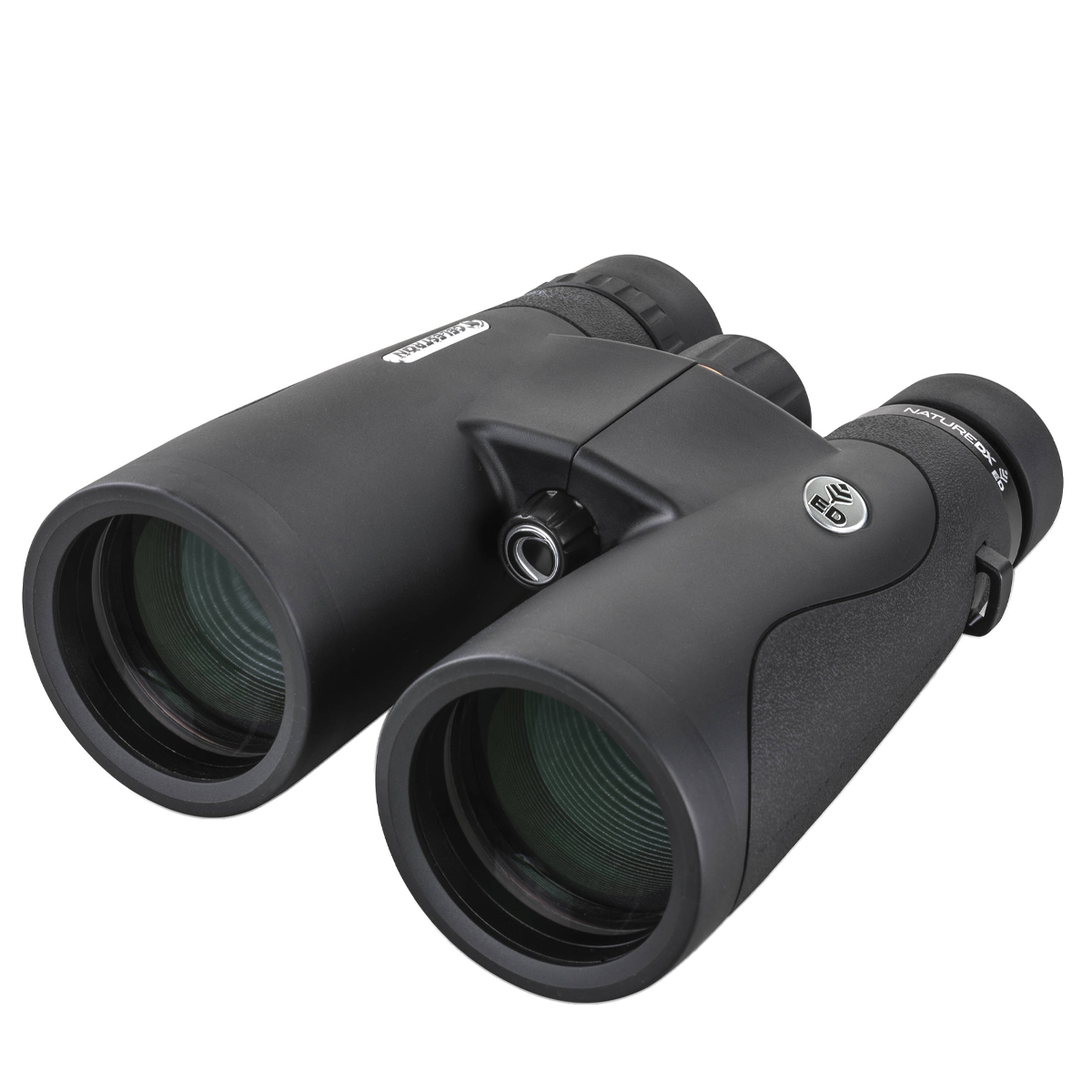
The ability to get a close focus on nearby objects as well as a reasonably wide field of view makes the Celestron Nature DX ED 12x50 binoculars useful for a wide range of outdoor uses.
Read more below
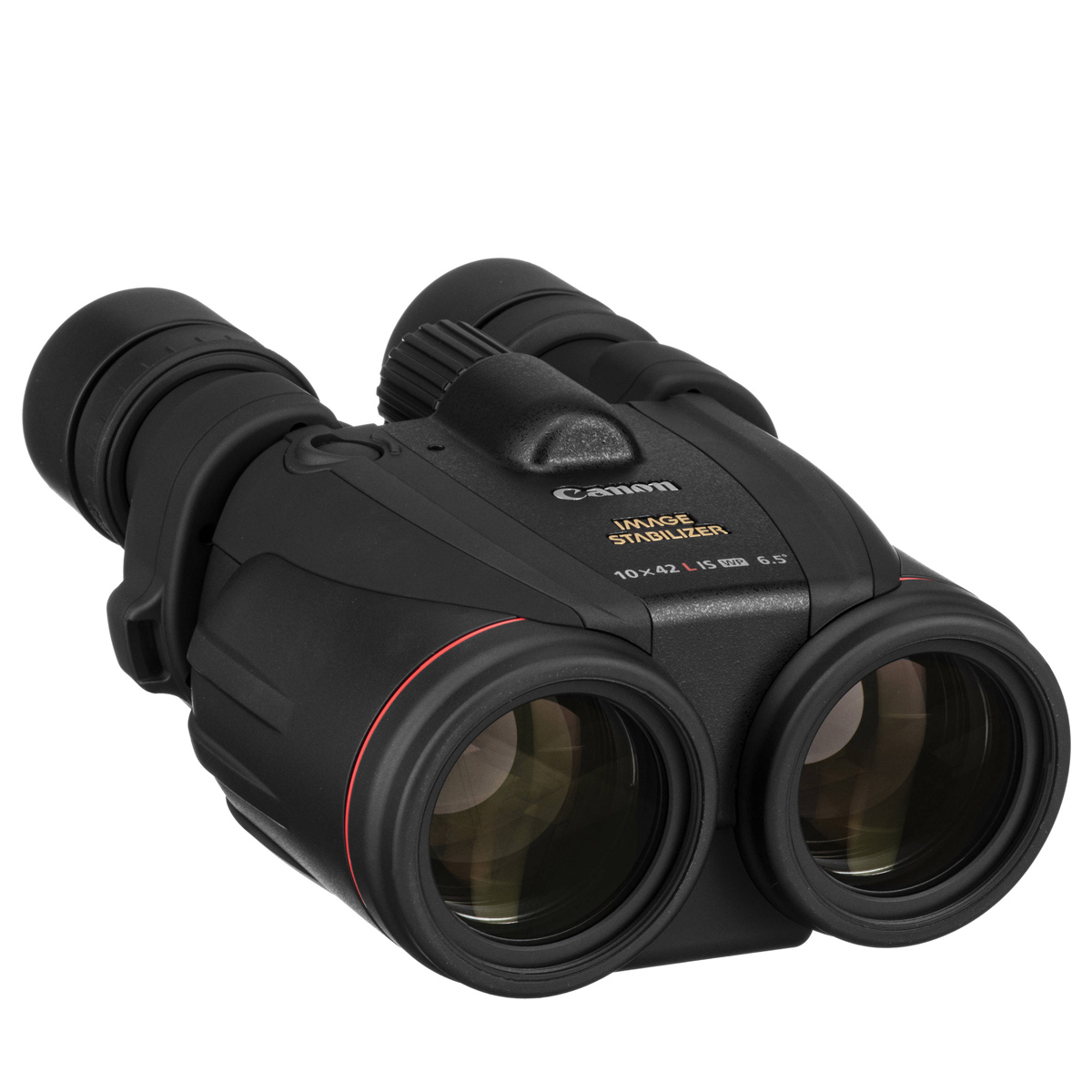
This battery-operated option enables you to get wobble-free images of far-reaching views by just pressing a button on the binoculars – and the stabilizing effect is both instant and jaw-dropping.
Read more below
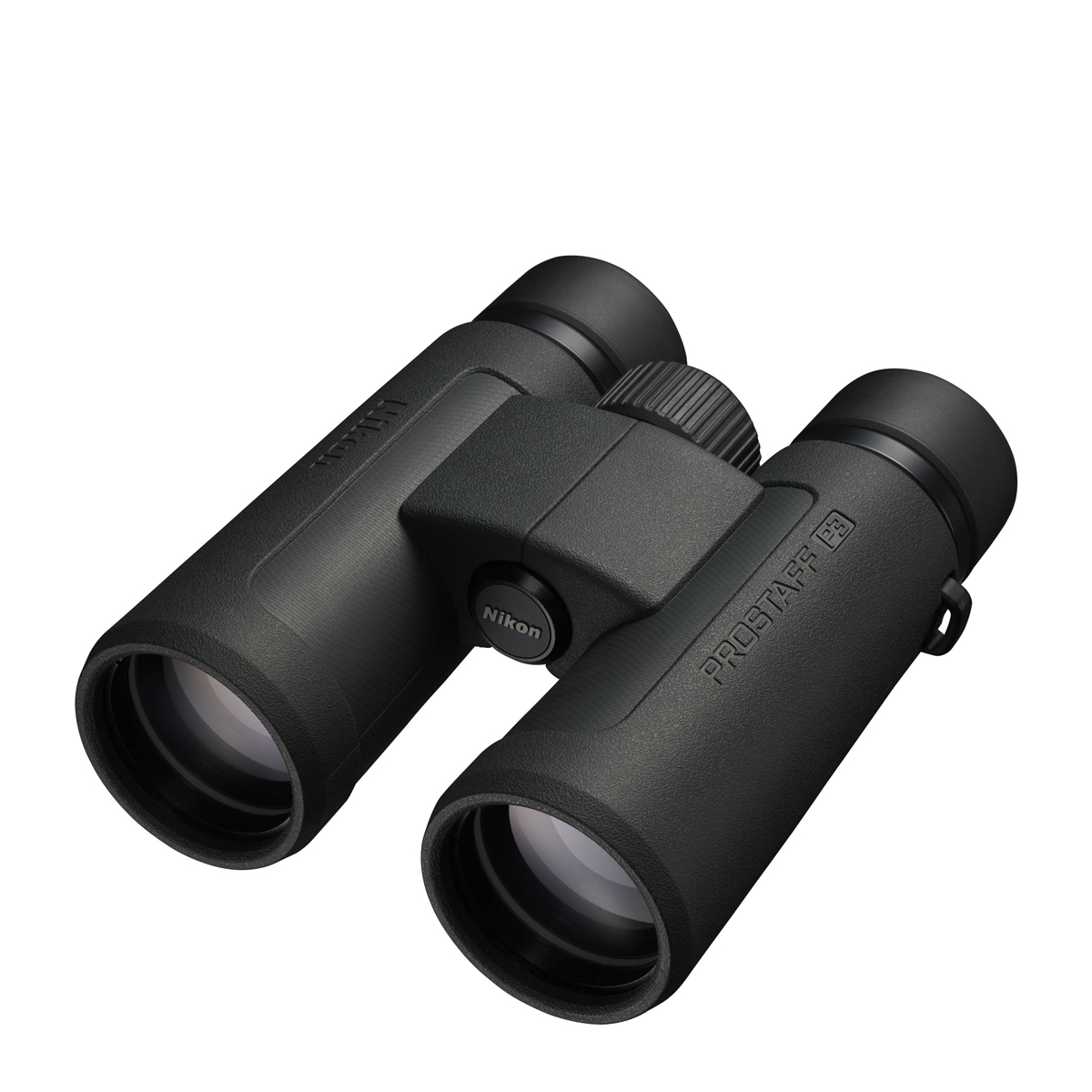
The Prostaff P3 binoculars are a great entry-level product that really impressed me when reviewing. Nikon has saved on manufacturing costs where it counts, but offers a good magnification for beginners.
Read more below
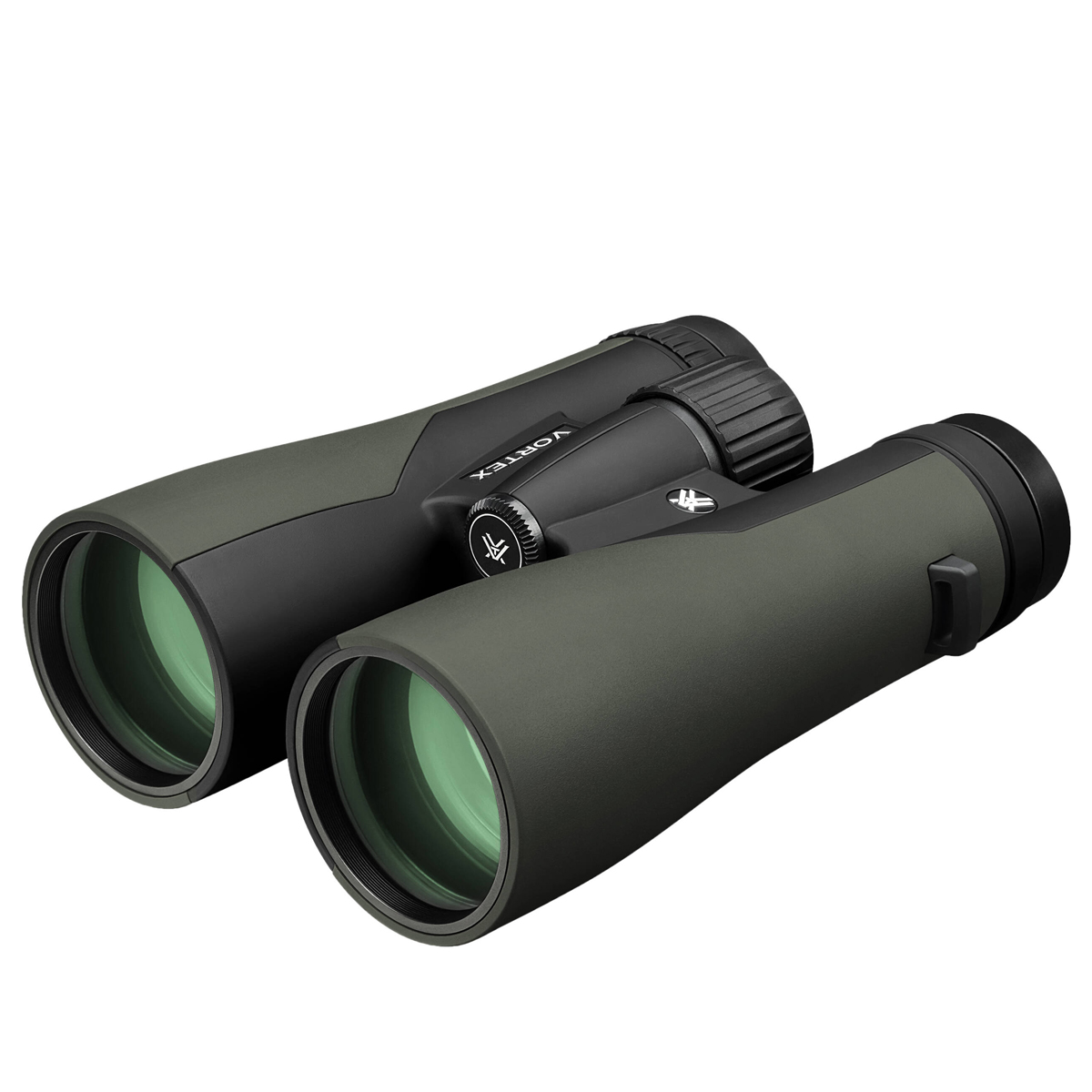
These are a great option if you can't decide between buying binoculars primarily for wildlife or astronomy.
Read more below
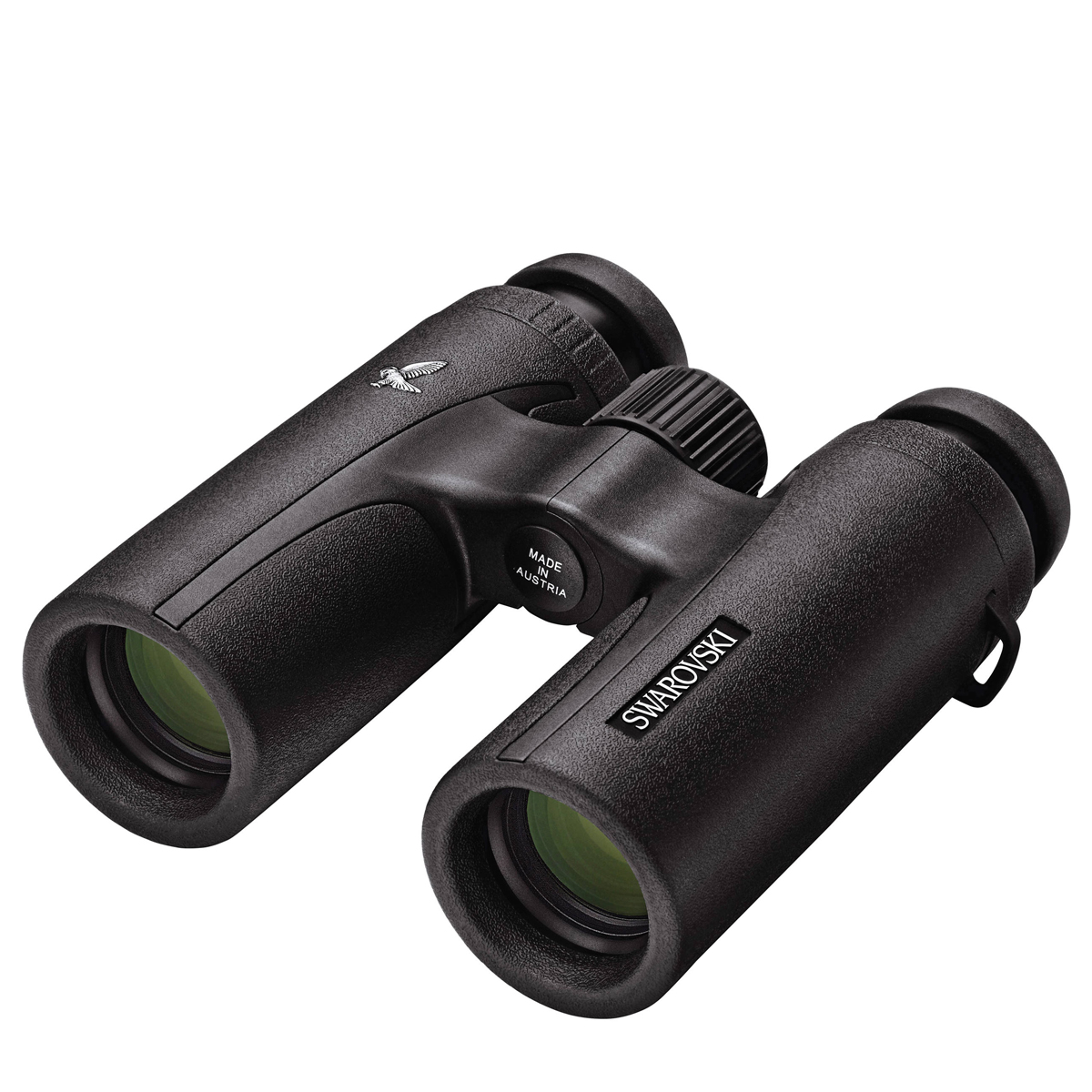
If image and build quality are your number one top priorities, I think these premium compact binoculars are the best you can get.
Read more below
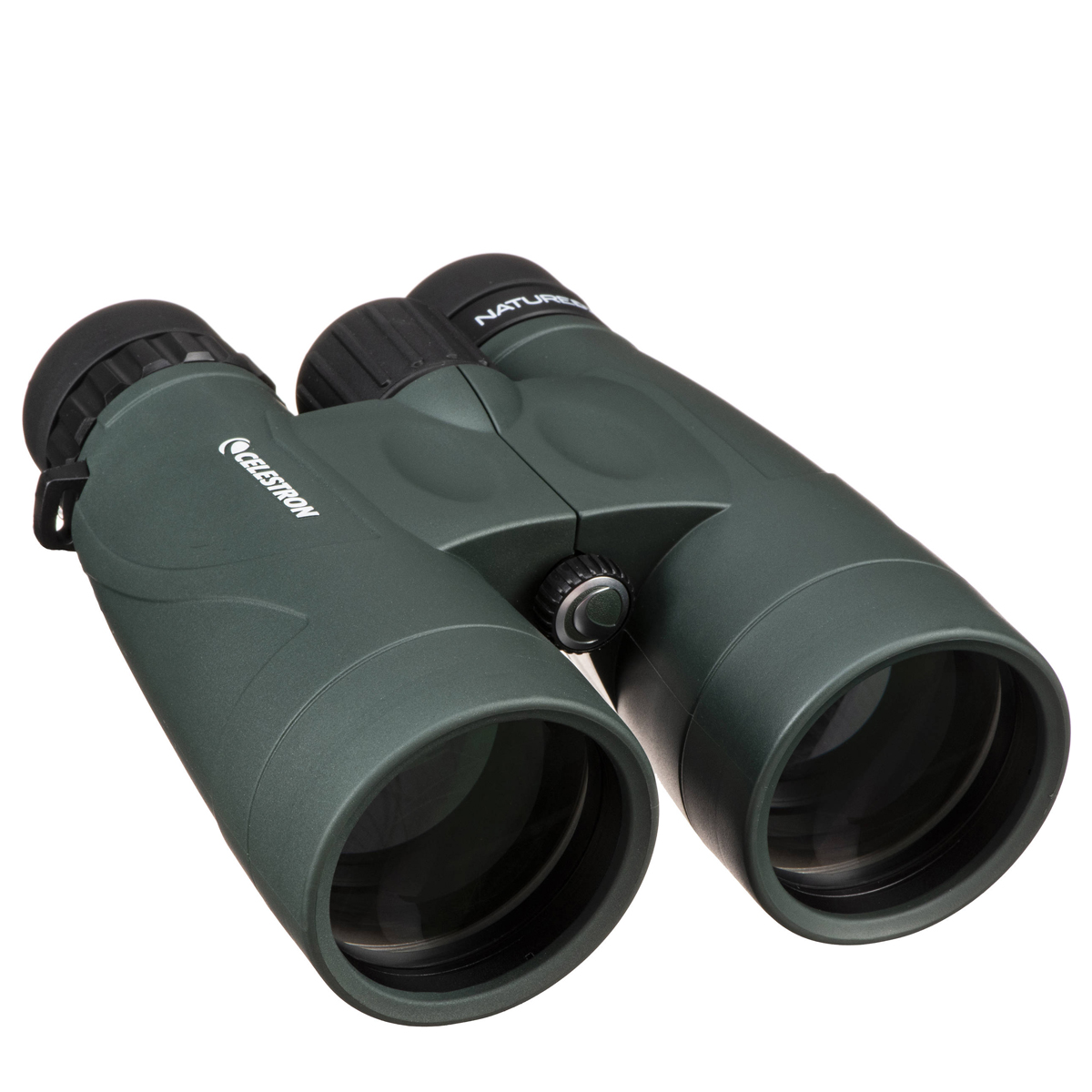
If you want the best bang for your buck I'd pick these: they are a great pair of binoculars to help you out in any situation.
Read more below
View the full list ⤵
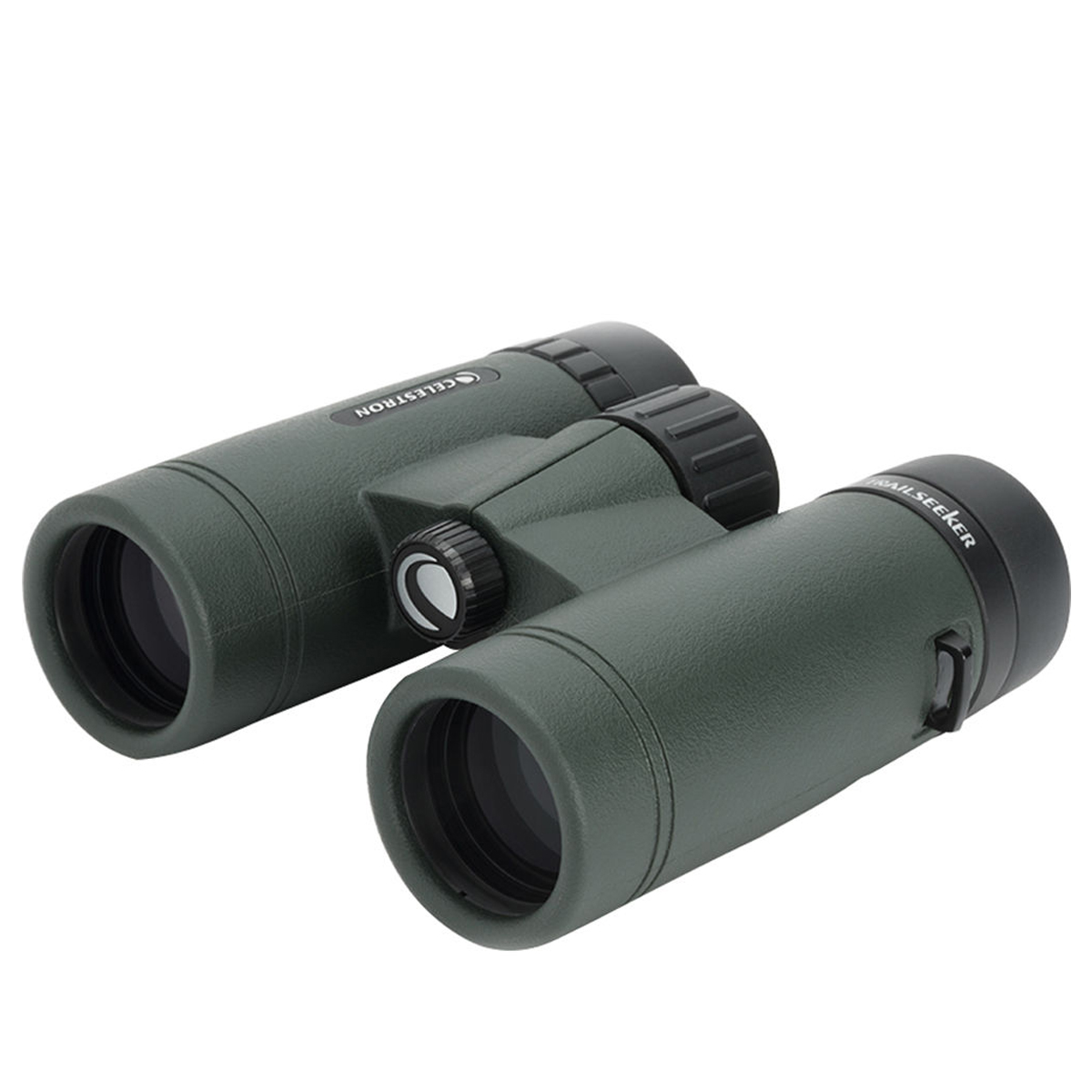
You can spend thousands on a good pair of binoculars for bird-watching - but this pair is a great place to start, offering good views across the board.
Read more below
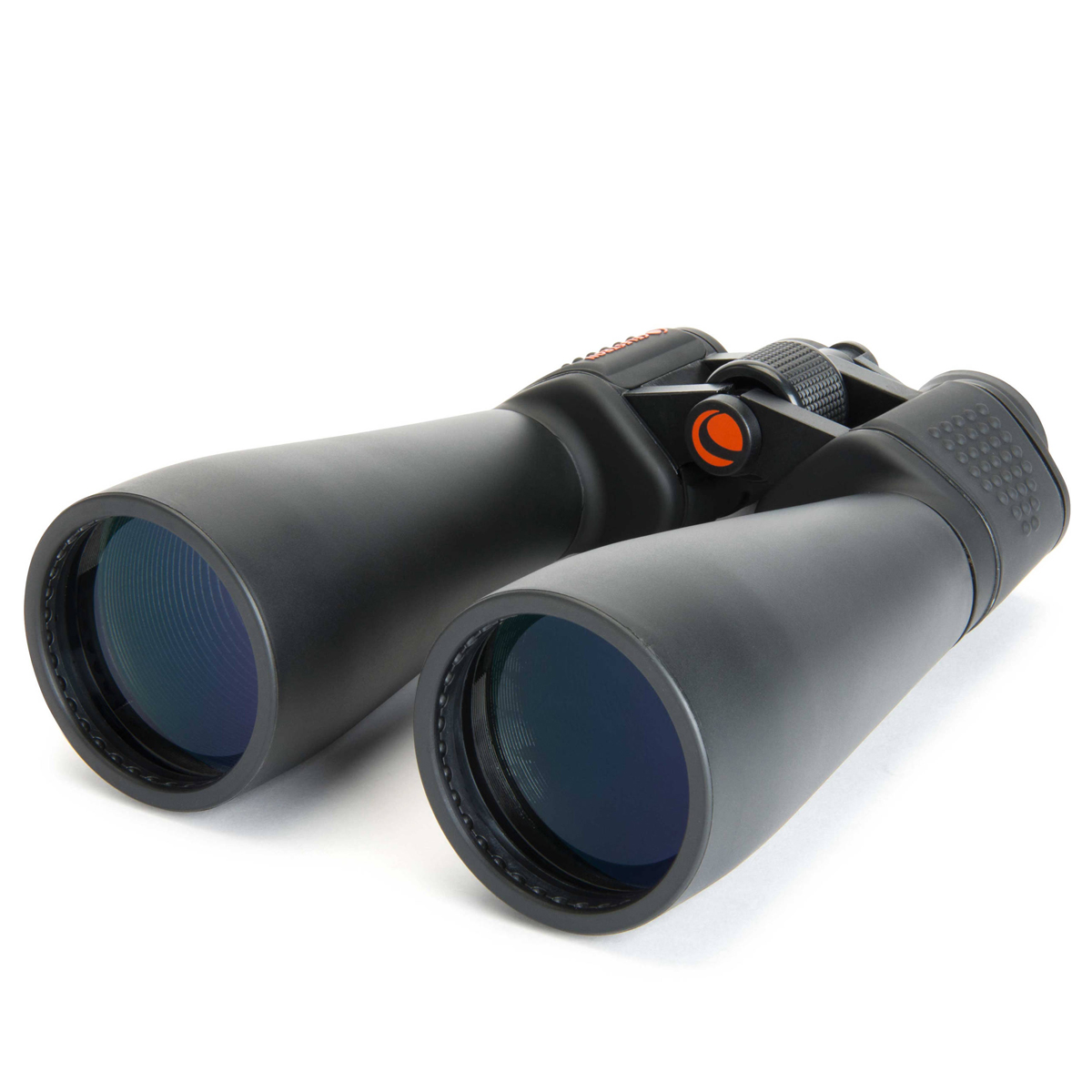
These incredibly well-priced Celestron binos have a huge 15x magnification which can help you to observe galaxies, planets, and lunar details.
Read more below
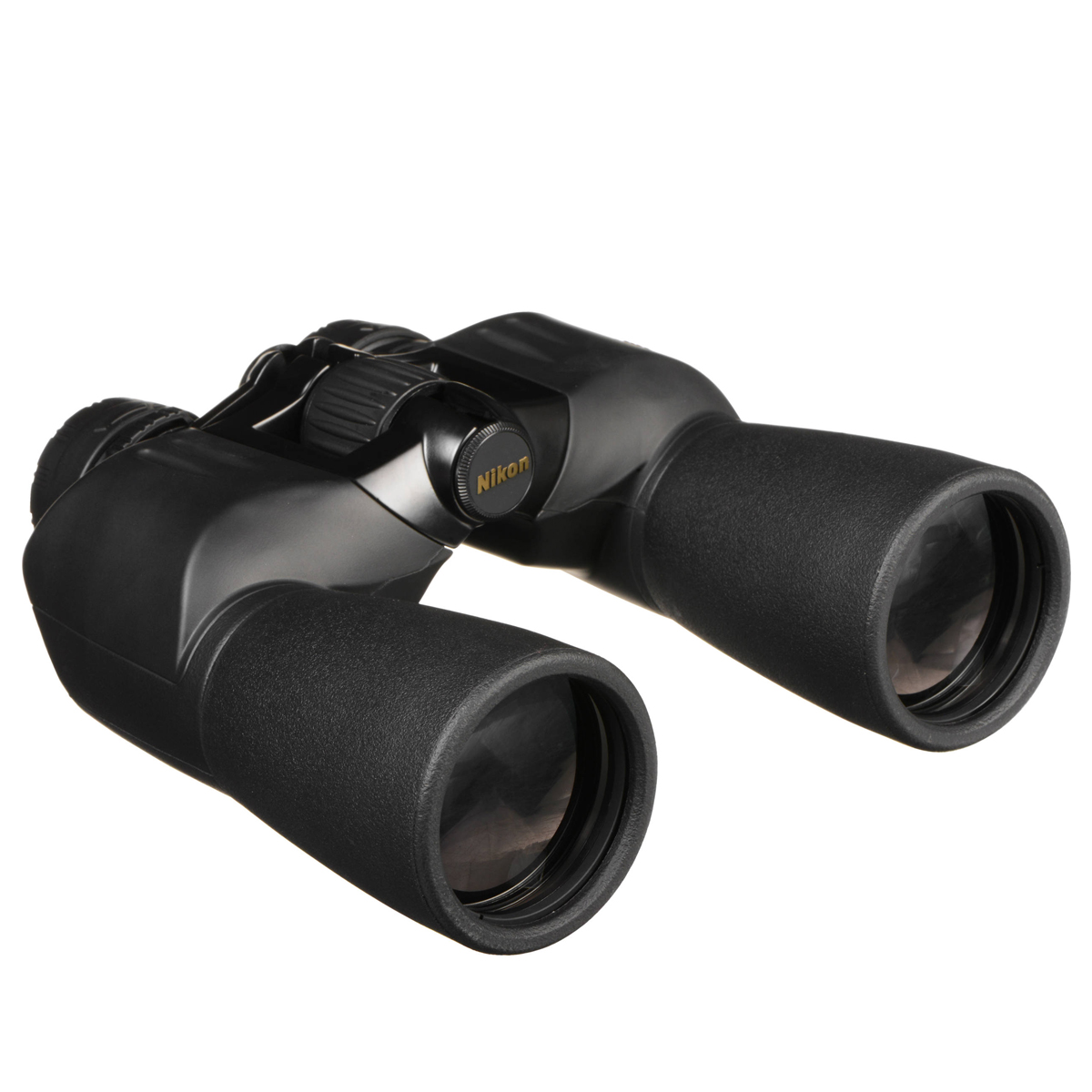
The Nikon Action EX 12x50 is a great value combination of high power and light-gathering while you're on the ocean either fishing or sailing.
Read more below
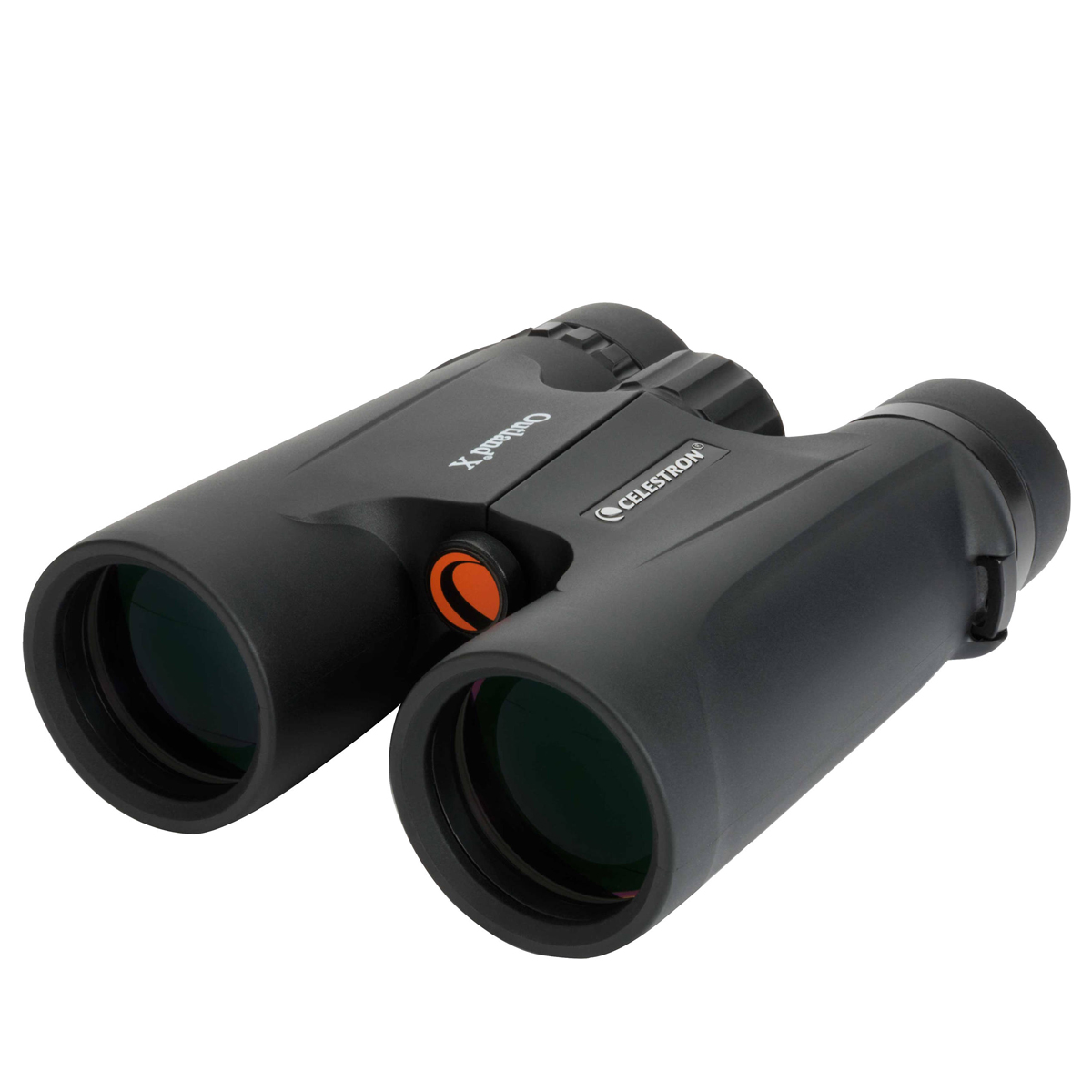
Something of a bargain, this pair of Celestron BaK-4 prism binoculars boasts 8x magnification and multi-coated optics to keep your view as clear as possible.
Read more below
The Best binoculars
Why you can trust Digital Camera World
Best binoculars overall

Specifications
Reasons to buy
Reasons to avoid
✅ You want compact: These are a great size to have in your bag at all times
✅ You want great build quality: These are built like a tank, but won't cost you the earth!
❌ You want a premium feel: These binos suffer from a lower-grade rubberized feel
❌ Not the best for long observations: Not much to offer with eye relief and the lens caps can obstruct viewing
The ability to get a close focus on nearby objects as well as a reasonably wide field of view makes the Celestron Nature DX ED 12x50 binoculars useful for a wide range of outdoor uses, as do the tough build quality and the ED (extra-low dispersion) glass. This high-quality glass gets rid of chromatic aberration, an effect that manifests in some binos as a purplish edge on bright objects in view, especially in low-light conditions like sunrise and sunset. The optics perform very well at night, by the way.
Of course you’d expect the binos to function well for long-distance viewing, but they can also focus on object just two meters (6.5 feet) away, making them a real asset for a spot of back-garden birdwatching, for example.
If you're after a mid-range pair of large binoculars ideal for wildlife viewing, I think the Celestron Nature DX ED 12x50 fits the bill perfectly. They aren’t particularly light, but they are a nice compact size for traveling.
Read our full Celestron Nature DX ED 12x50 review for more details
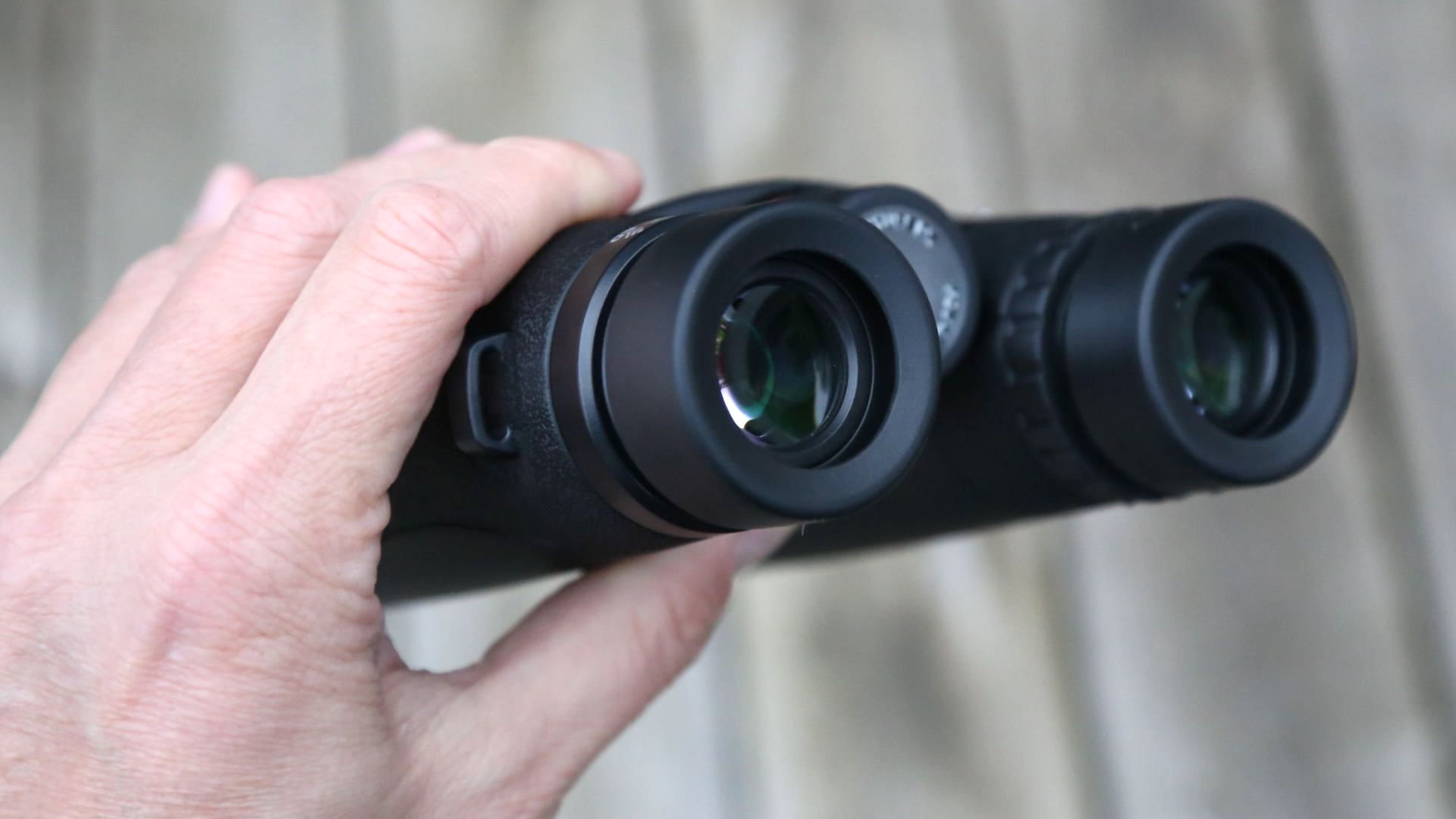
| Row 0 - Cell 0 | Row 0 - Cell 1 | Score |
Optics | Big, bright optics that outperform the price | ★★★★½ |
Features | Travel-friendly with great build quality | ★★★★ |
Value | With their solid construction and great perfroming optics these exceed their price range | ★★★★ |
Best stabilized binoculars
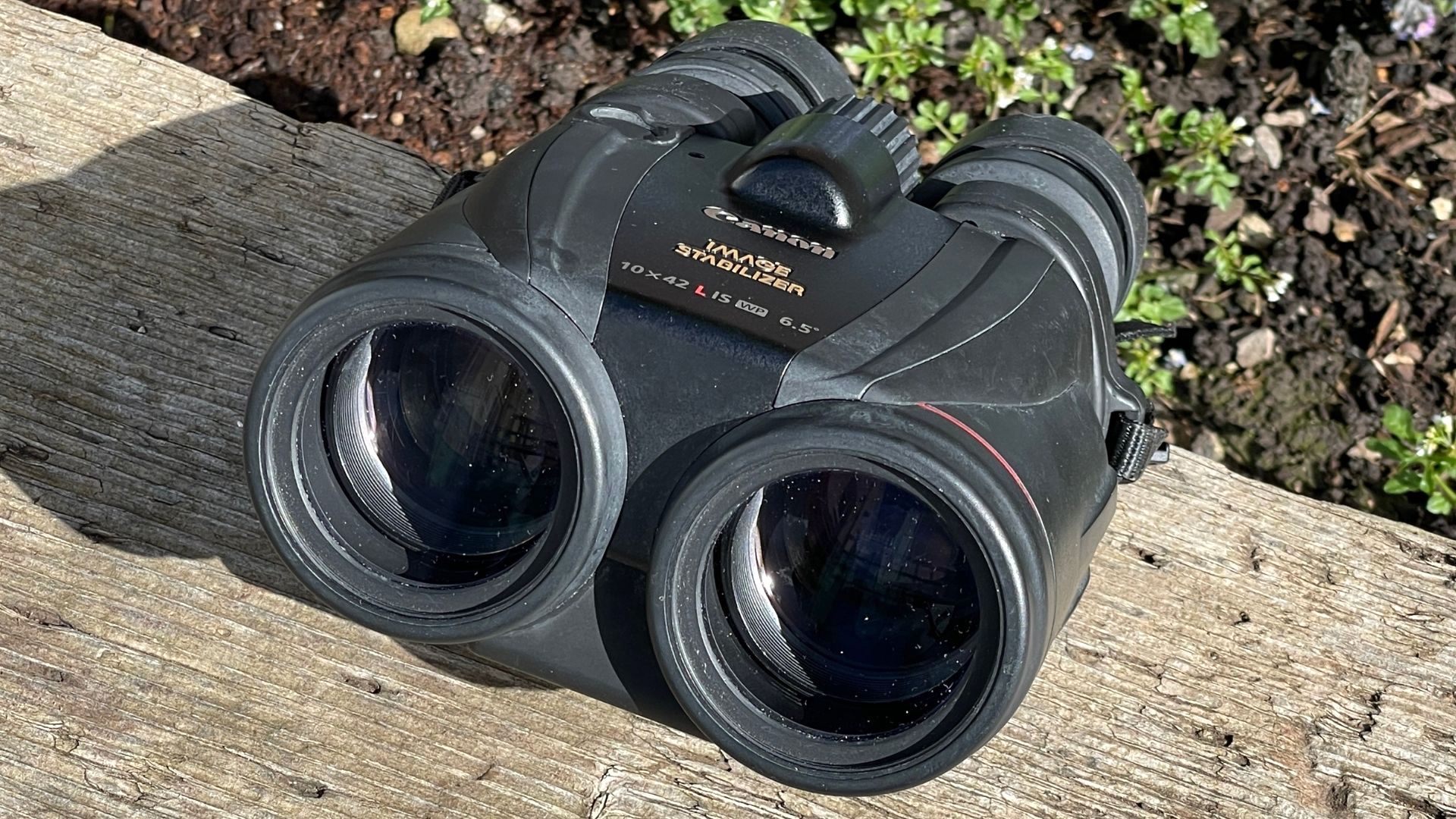
Specifications
Reasons to buy
Reasons to avoid
✅ You want the best: With its Vari-Angle Prism IS system these binos utilizes gyro sensors and micro-processor to give a rock-steady image
✅ You want rugged: Being both waterproof and fog proof these binos are built to tackle any situation
❌ You're on a budget: These cost a fortune, so are out of reach for most of us
❌ You want lightweight: Due to their size and tech inside these are not the lightest around
All of Canon’s current range of binos have the ‘IS’ suffix in their model name to denote the fact they’re image-stabilized binoculars. This battery-operated option enables you to get a wobble-free image by just pressing a button on the binoculars – and the stabilizing effect is instant and jaw-dropping when you see it in person. Crucially, you just use the image stabilization when you need it - and you can still use the binoculars even if the battery runs flat.
From the broad range of Canon IS options available, I picked the rubber-coated Canon 10x42L IS WP model as the best. As the WP in the name suggests, they’re also waterproof, so ideal for an even broader range of long-distance pursuits. Plus, Canon’s ‘L’ series is its premium lineup, providing a super steady view in the most adverse of conditions.
As well as rock-solid stability, these porro prism binoculars sat very comfortably in my hand and sport a comfortably long (at 16mm) eye relief..
Read our full Canon 10x42L IS WP binoculars review for more details
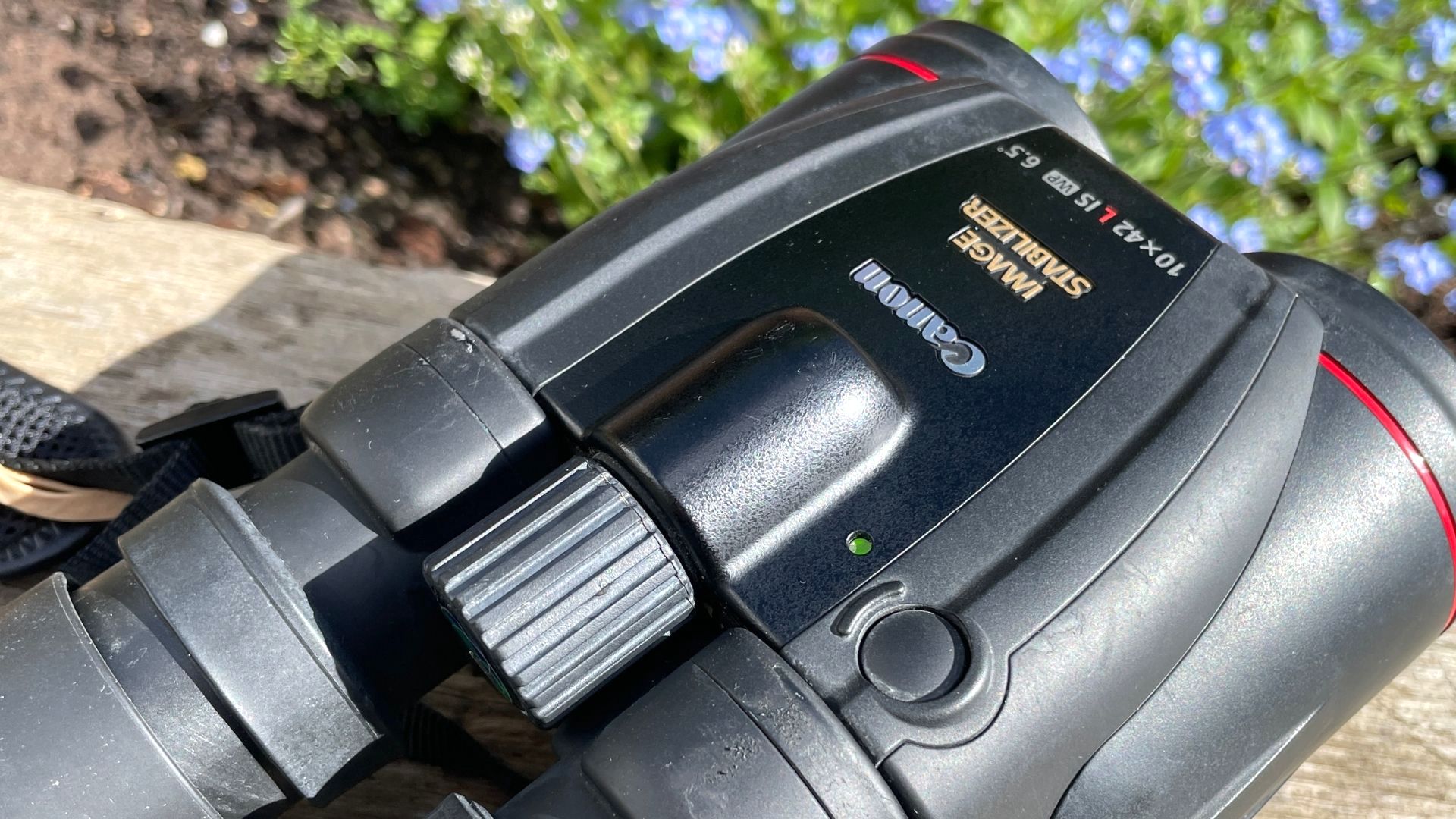
| Row 0 - Cell 0 | Row 0 - Cell 1 | Score |
Optics | For image stablized binos, there are the best in the business with crystal clear optics | ★★★★★ |
Features | Image stabilization is the party pice with these binos, turning shaky observations into smooth, still viewing | ★★★★½ |
Value | Their cost is very high for most users, but you do get what you pay for | ★★★★ |
Best-value binoculars
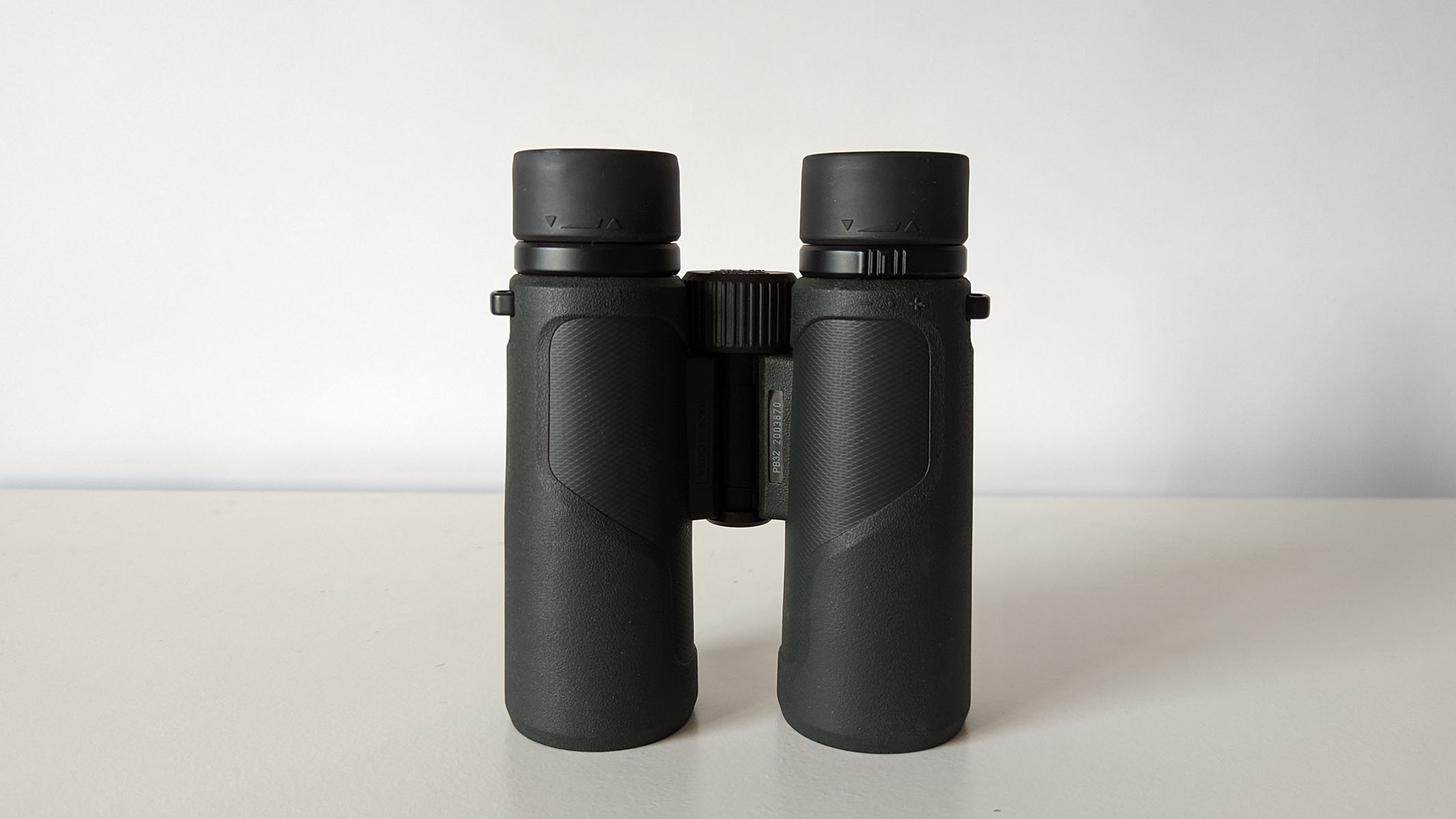
Specifications
Reasons to buy
Reasons to avoid
✅ You're on a budget: These binos offer amazing value for money
✅ You want lightweight: At just 465g these are perfect to carry with you all day
❌ You want quality: While the binos are good, the accessories feel very cheap
❌ You want solid weatherproofing: The rubberized shell feels spongy and could lead to inconsistent weather-sealing
The Prostaff P3 binoculars are an excellent entry-level choice and a great value for anyone looking to get into optics or upgrade on a budget. When I reviewed them, I was impressed by how Nikon focused on delivering top-notch optics while saving costs on less essential accessories. The result is a lightweight, durable pair of binoculars that offers the high-quality performance Nikon is known for, all at a very approachable price.
With multicoated lenses, these binoculars provide crisp, bright images, even in challenging lighting conditions. Whether you’re birdwatching at dawn, spotting wildlife, or enjoying an airshow, the Prostaff P3 handles it all with ease. They’re comfortable to use for extended periods and versatile enough to perform well across a variety of activities.
If you choose these, I’m confident you’ll be pleased with the results, even at full price. Over time, you might want to upgrade the neck strap and lens covers for better comfort and durability, but out of the box, they’re still an excellent pick. For anyone wanting reliable performance in a wide range of settings, the Prostaff P3 is a fantastic option.
Read our full Nikon Prostaff P3 8x42 binocular review for more details
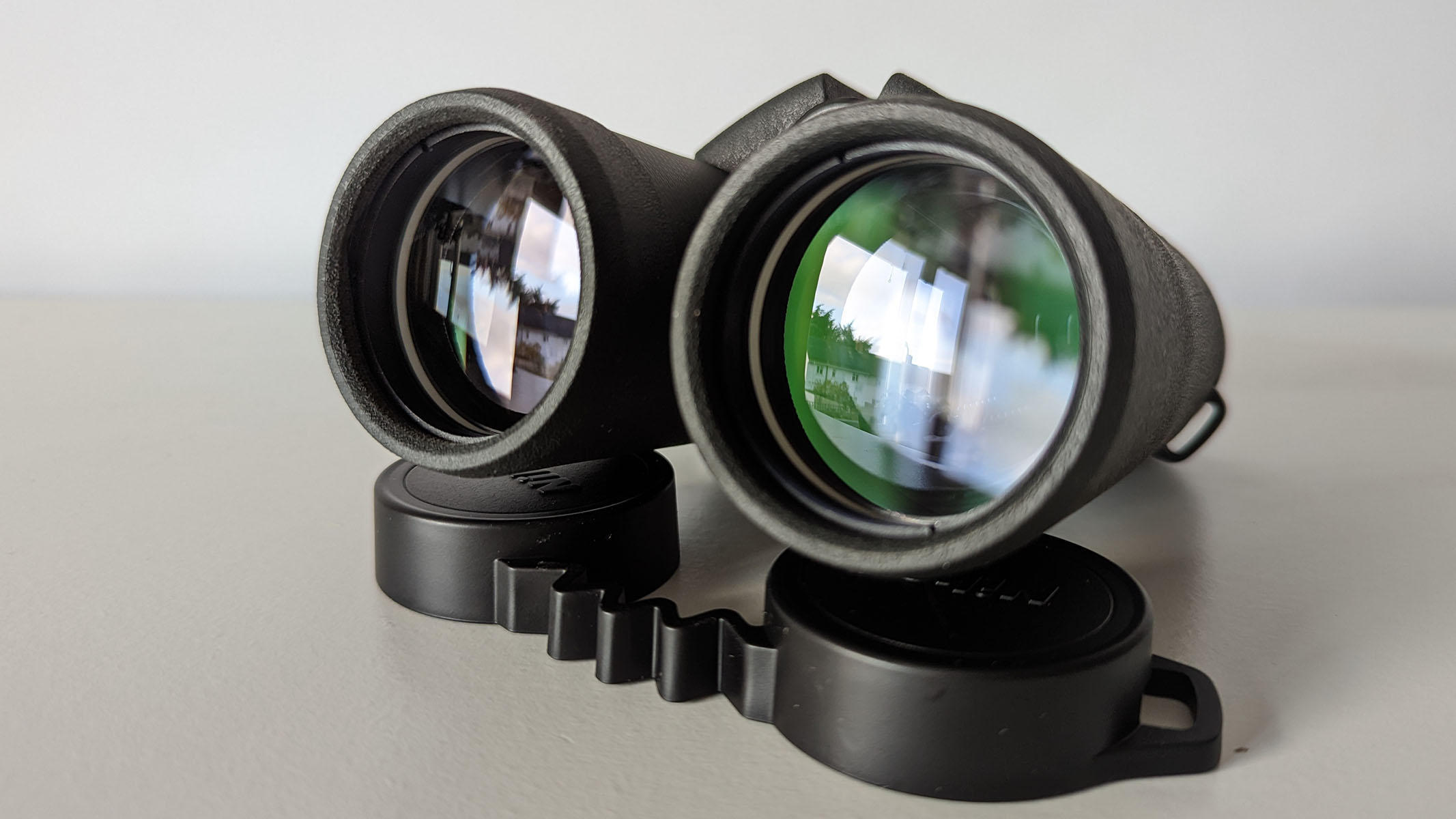
| Row 0 - Cell 0 | Row 0 - Cell 1 | Score |
Optics | With great performing optics, Nikon has left what's really matters, while getting rid of other things you don't need | ★★★★ |
Features | Extremely lightweight and compact make them perfect for observing wildlife cheaply | ★★★★ |
Value | Priced competitively these binos are the perfect solution for anyone on a budget | ★★★★½ |
Best all-round binoculars
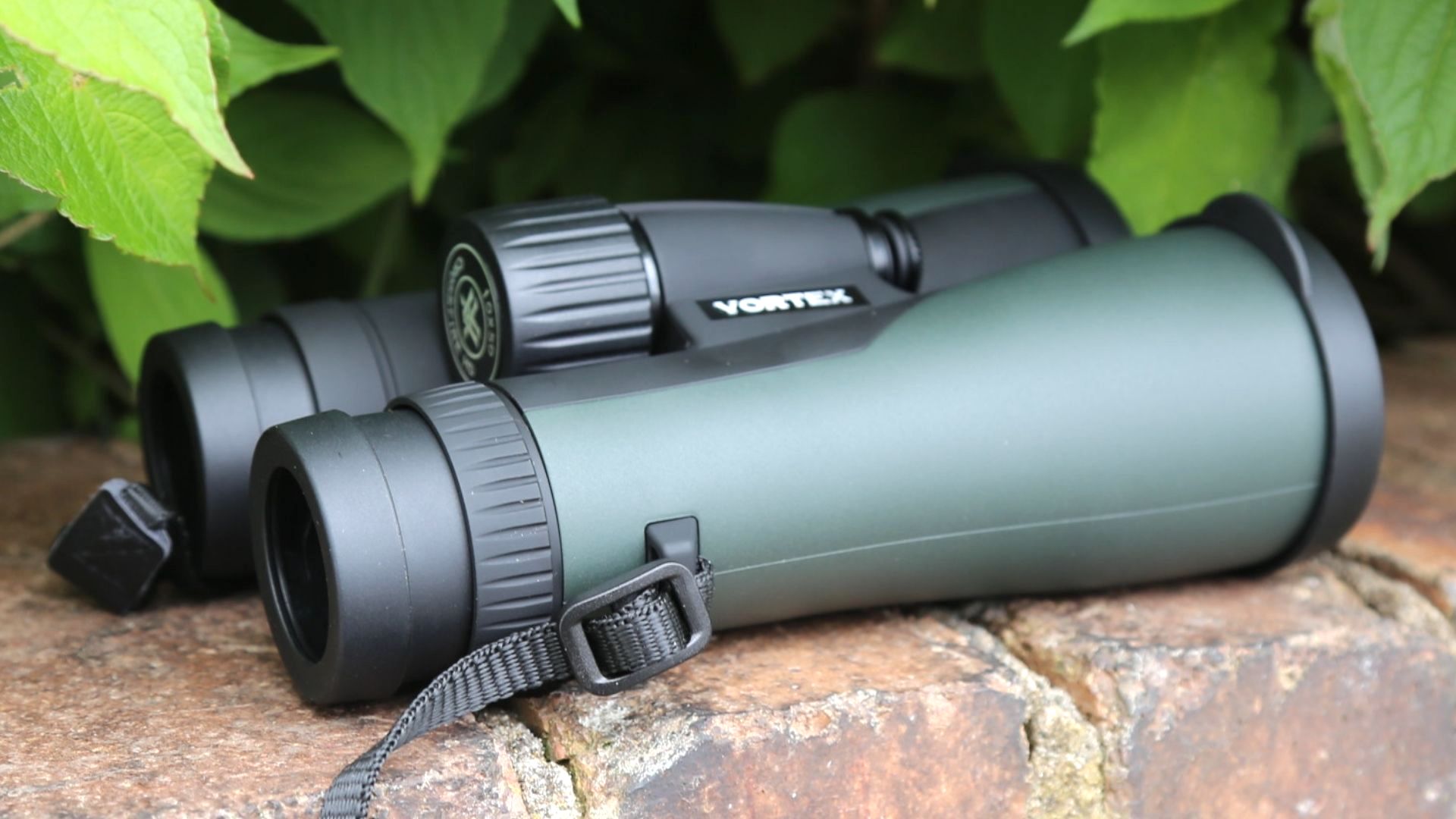
Specifications
Reasons to buy
Reasons to avoid
✅ You love hiking: With an included harness, your neck will thank you
✅ You want to view in low light: These binos offer great light gathering to view wildlife even on dim days
❌ You hate tethered lens caps: Unfortunately, the lens caps are attached and can get in your way when viewing the subject
❌ You like to travel light: The harness can get confusing and also has to be worn over the top of your clothing
If you can't decide between buying binoculars primarily for wildlife or astronomy then you only have one decision to make. Perfect for both day and night activities, 10x42 or 10x50 binoculars are the best options for most people, though the Vortex Crossfire HD 10x50s are a definite step-up product that has the big benefit: it comes with a bespoke chest harness for extra comfort and quick deployment. It’s not often you’ll get this included with a set of binoculars, but in practice they’re pretty effective as easing the load during long viewing sessions.
They also produce good results. We took them to a football and were delighted with the relatively wide field of view, as well as an image that held sharp nearly from edge to edge. They also demonstrated good low-light sharpness and contrast when we did some star-watching.
With the excellent build quality and superb optics, I think the Vortex Crossfire HD 10x50 should be candidate binoculars for anyone looking for a step-up option to use for many years in all kinds of scenarios, from wildlife to sport to astronomy.
Read our full Vortex Crossfire HD 10x50 review for more details

| Row 0 - Cell 0 | Row 0 - Cell 1 | Score |
Optics | For the price the optics offer great viewing in either daytime or night observations | ★★★★ |
Features | Offering a good magnification, solid construction, these are a great step-up option from budget offerings | ★★★★½ |
Value | For thier price they offer a good price-to-performance ratio that most user will like | ★★★★½ |
Best binoculars for optical quality
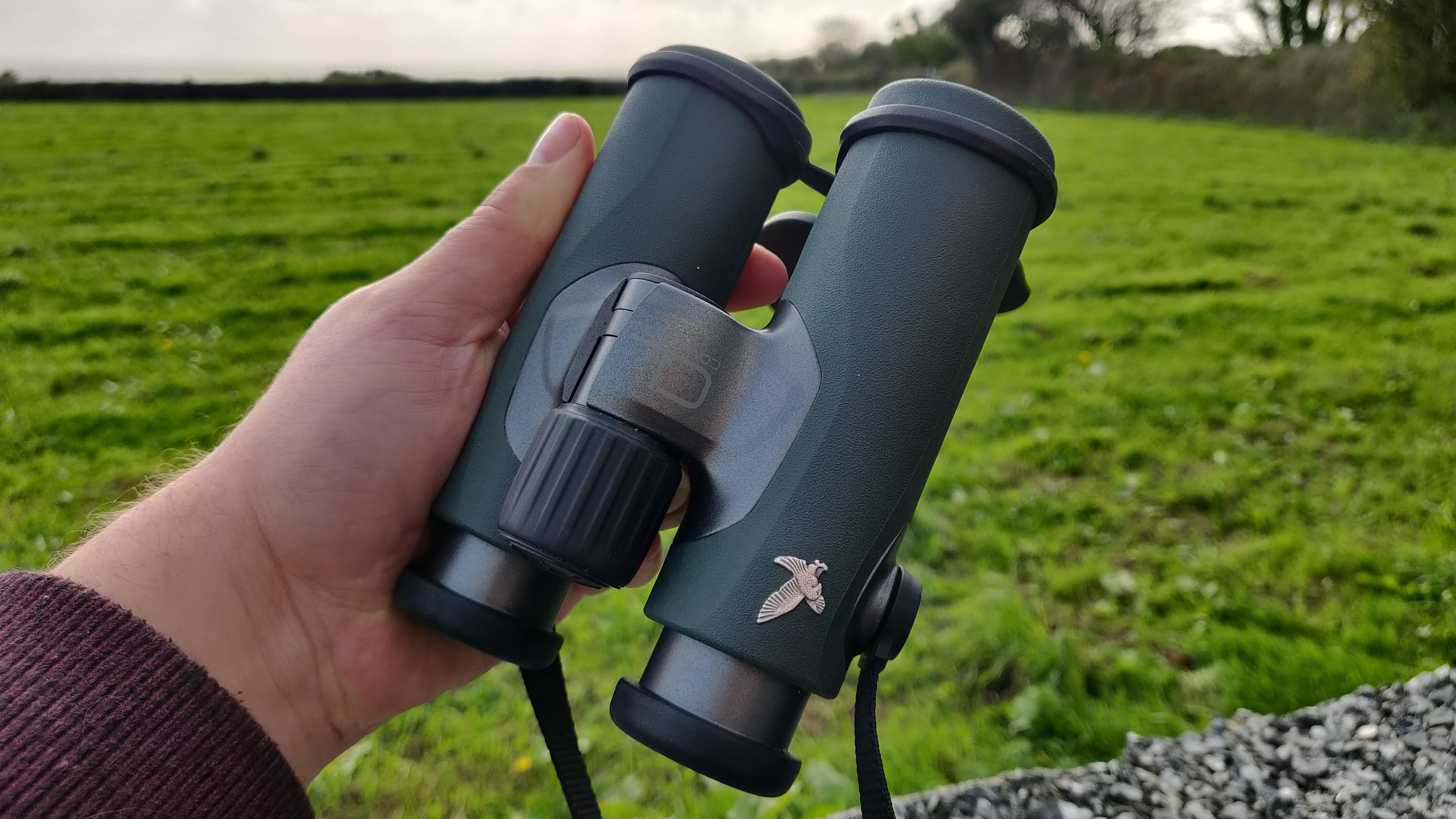
Specifications
Reasons to buy
Reasons to avoid
✅ You want the best: If you want the best optical quality around - nothing beats these!
✅ You want crystal clear viewing: The performance is second to none, and your view will be crystal clear to enjoy many observations with real sharpness and clarity
❌You're on a budget: These are the best around, but you have to pay a hefty price for perfection
❌ Accessories: Unfortunately, the storage bag and strap don't match the quality of the binos overall
If price isn't a concern and you just want the best optical quality on the market to date, then this pair of Swarovski CL Companion 10x30 compact binoculars are just the thing to let you observe wildlife from as close to 3 meters all the way up to 132 meters – with crystal clear vision - I thought they were fantastic!
If you're looking for the best optical quality binoculars that are also lightweight for carrying long distances, and that let you see your observations from a far distance, these are possibly the best compact binoculars you can buy, and I've tested a few!
With the lightweight construction of the CL Companion binoculars and the impeccable build quality, you can be sure your investment will withstand the test of time, which is what you would hope as these are far from cheap. But I say you get what you pay for and the optical quality of these binoculars is possibly the best on the market.
Read our full Swarovski CL Companion 10x30 review for more details
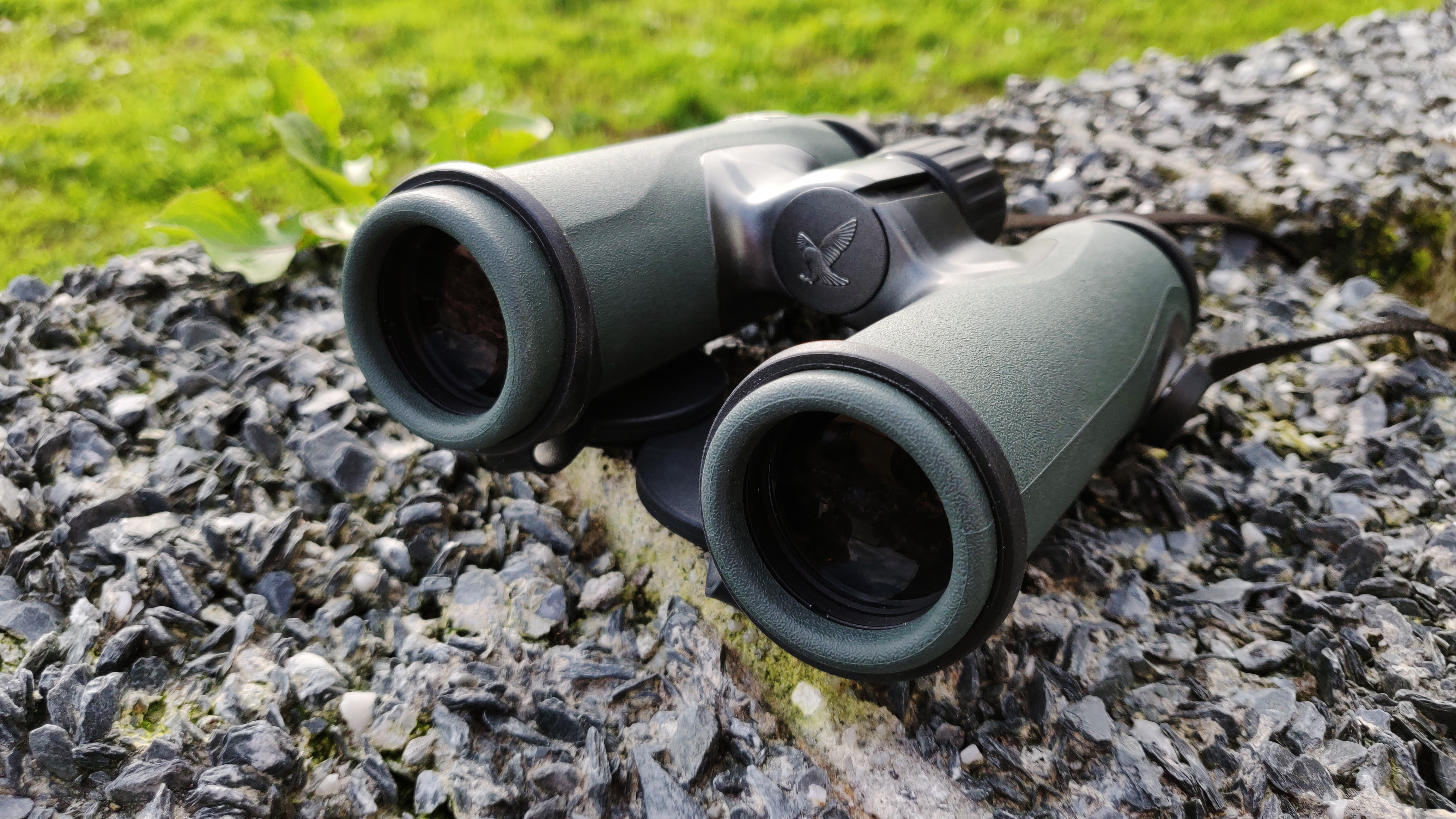
| Row 0 - Cell 0 | Row 0 - Cell 1 | Score |
Optics | These are the best in the business, clarity is crystal clear, giving your observations that 3D pop | ★★★★★ |
Features | Solid construction, expectional optics, and the best materials used make these the best pair of binos out there | ★★★★★ |
Value | These do come with a heavy cost, but when you want the best, you have to pay for it | ★★★★★ |
Best high-magnification binoculars

Specifications
Reasons to buy
Reasons to avoid
✅ You wear glasses: With great eye relief your eyes won't get fatigued
✅ You want the best bank for your buck: At under $200/£200 these offer a great price to performance ratio
❌You care about color fringing: While viewing in various daylight conditions color fringing was distracting
❌You want good clarity lenses: Corners were notably soft around the edges
A sweet spot for binoculars, the Celestron Nature DX 12x56 pack a heck of a lot of optics into a tidy, affordable package. A close minimum focusing distance and the generous 12x magnification range make them ideal beginner wildlife binoculars and their 56mm objective lenses even offer some nighttime views (especially of the moon) an attractive opportunity.
For birdwatching, we enjoyed the extra detail in the feathers that the 12x magnification gave us, and were also pleased that the binos could focus in at less than three meters – great for observing feed stations in the garden, for instance.
Are they the sharpest you can get? No. Do they have no color fringing? No. But are they one of the best binoculars you can buy for the price? Wholeheartedly, yes I think so. Just big enough to zoom in on far-away subjects without becoming cumbersome, the DX 12x56 is the model of the line-up to get.
Read our full Celestron Nature DX 12x56 review for more details
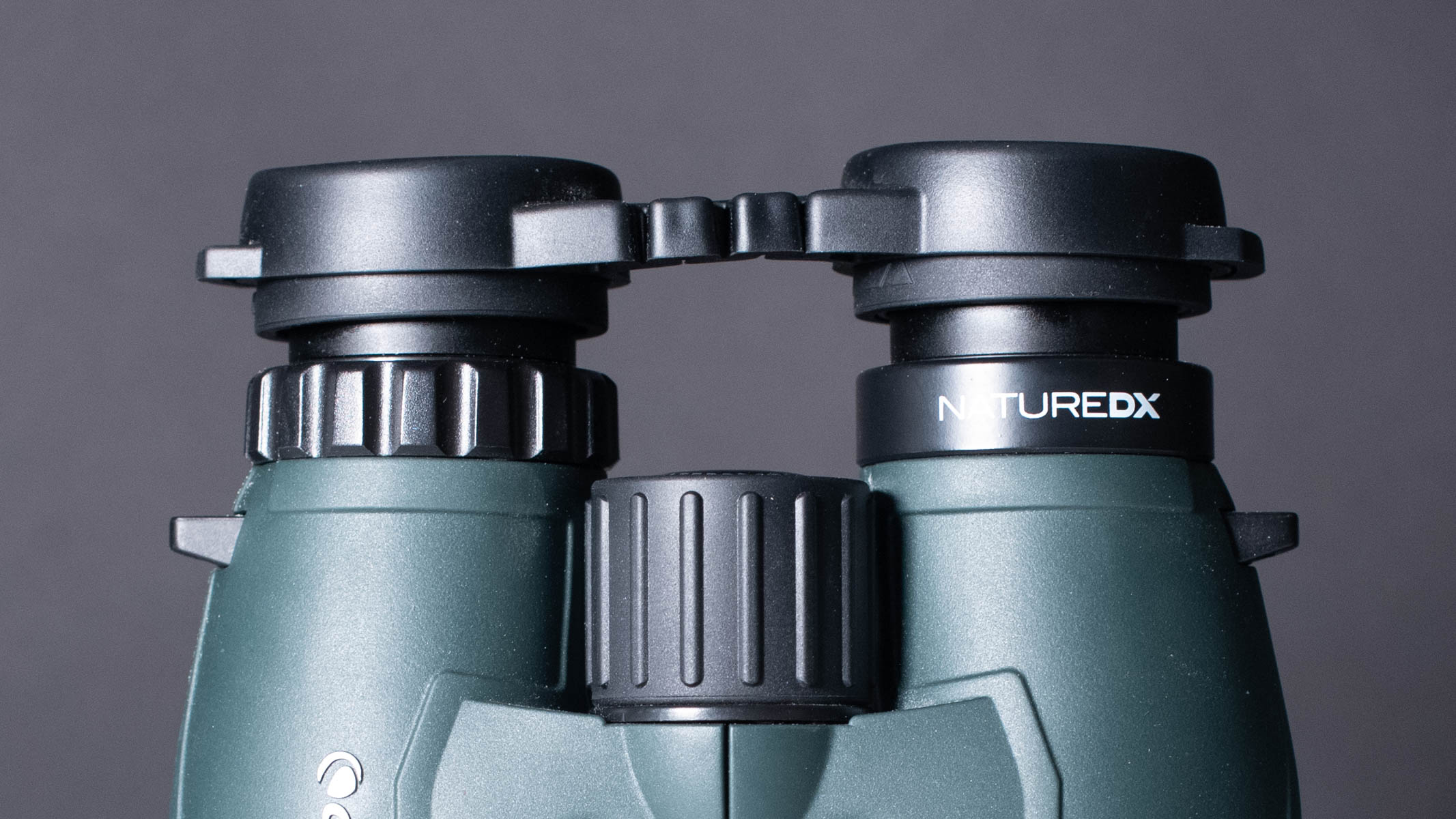
| Row 0 - Cell 0 | Row 0 - Cell 1 | Score |
Optics | Unforitnaly, we did notice some color frining which can be distraticin when making observations in the daylight. Corners were also noticeably soft | ★★★½ |
Features | Offering great eve relief will benefit those who wear glasses. Due to thier size they will fit in anyone's hand. High magnification means greater observations across vast distances. | ★★★★ |
Value | For what you get, they are evenly priced in the market, but other do a better job for cheaper | ★★★★★ |
Best binoculars for bird-watching
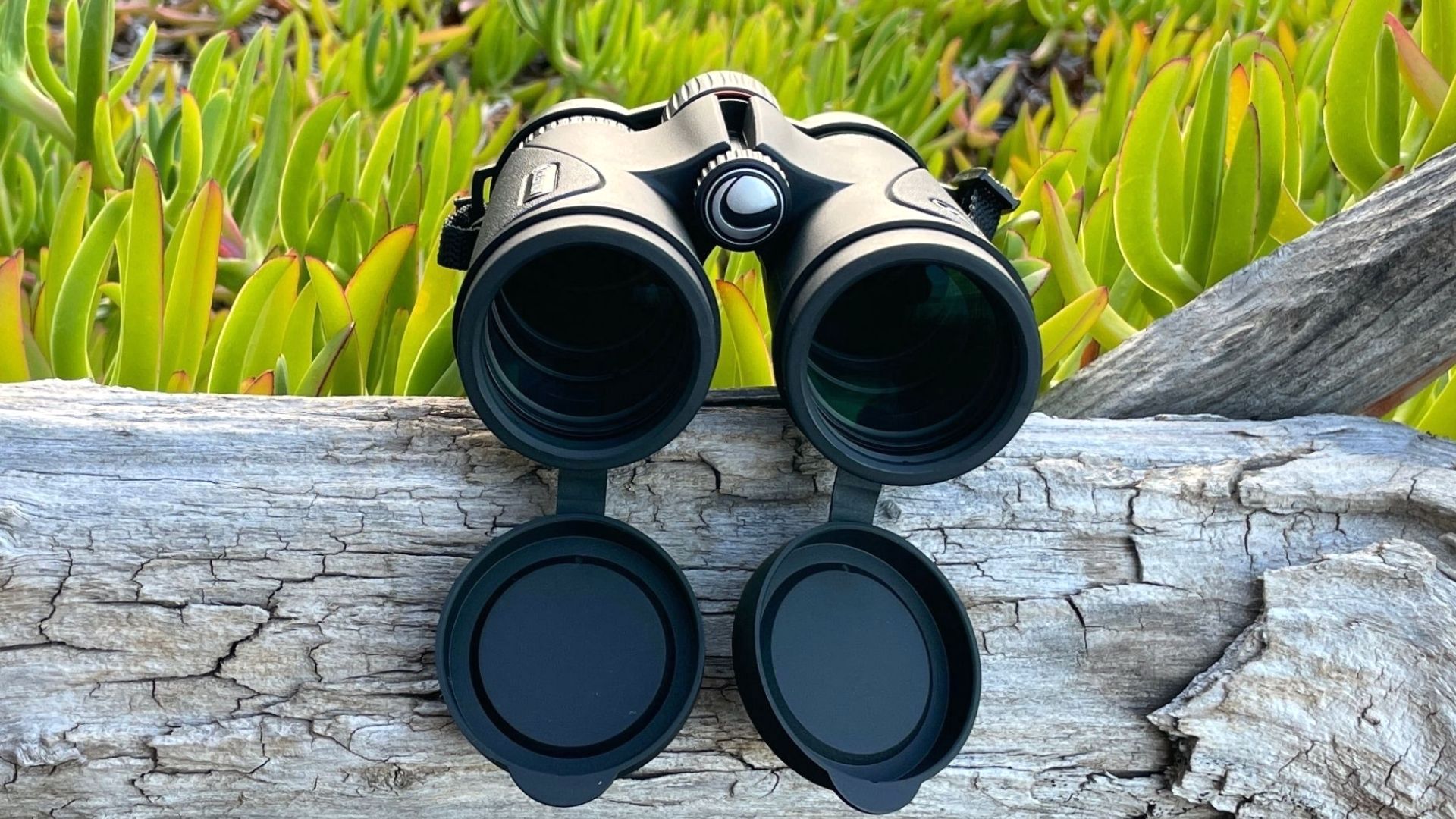
Specifications
Reasons to buy
Reasons to avoid
✅You want a lot of accessories: With an included stuff sack and a full harness this is a ready-to-go kit for any adventure
✅ You want great waterproofing: If you like going out in all weathers, these binos have amazing waterproofing to repel the rain
❌ You like precision: The loose lens caps can put you off the build quality
❌ You want lightweight: They are a bit on the heavy side of things at 655g
Binoculars can be an excellent alternative to traditional telescopes for exploring the night sky, provided they offer sufficient magnification—and the Celestron SkyMaster 15x70 binoculars deliver just that. With an impressive 15x magnification, these binoculars make it possible to observe celestial wonders like galaxies, planets, and intricate lunar details that might otherwise be out of reach. They also feature a generous amount of eye relief, making them comfortable for spectacle-wearers, which is a thoughtful addition for prolonged stargazing sessions.
During testing, the timing was perfect to enjoy the summer constellations, and these binoculars provided stunning views of Cygnus, the Swan, and its surrounding stars. We also managed to observe the M81 and M82 galaxies, a feat that lower-magnification binoculars simply couldn’t achieve. The clarity and detail made stargazing an absolute pleasure, although their magnification power means that some basic knowledge of the night sky is helpful to navigate effectively with these optics.
While it’s possible to handhold the SkyMaster 15x70 binoculars for short periods, their size and magnification make them much more enjoyable when used with a tripod. Fortunately, Celestron includes a binocular tripod adapter, which makes attaching them to a tripod quick and easy. This small addition significantly enhances stability, allowing you to fully appreciate the detail and brightness they offer without any handshake interfering with your view.
Thanks to their affordable price and powerful capabilities, the Celestron SkyMaster 15x70 binoculars are a fantastic entry point into the world of stargazing. Whether you’re scanning constellations, exploring deep-sky objects, or marveling at the craters of the moon, these binoculars bring celestial sights within reach, offering a rewarding experience for novice and seasoned stargazers alike.
Read our full Celestron TrailSeeker 8x42 binocular review for more details
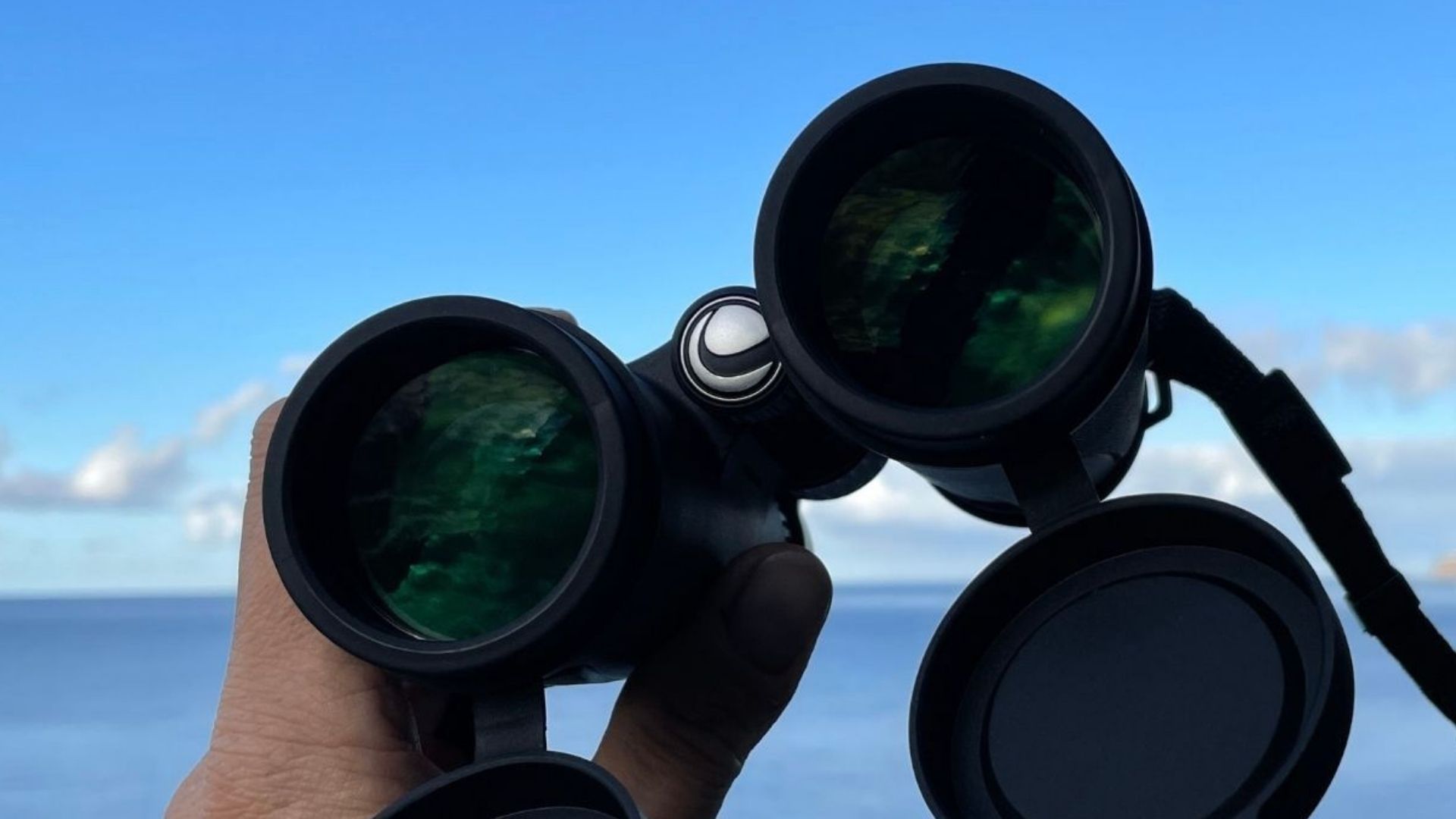
| Row 0 - Cell 0 | Row 0 - Cell 1 | Score |
Optics | Optics are clear with great visibility, even when focusing on the samllest of subject, perfect for bird watching | ★★★★ |
Features | Excellent waterproofing, wide field of view and solid construction make these perfect for all weather conditions | ★★★★ |
Value | For the price, they are quite possibly the best choice for keen bird watchers | ★★★★★ |
Best binoculars for astronomy
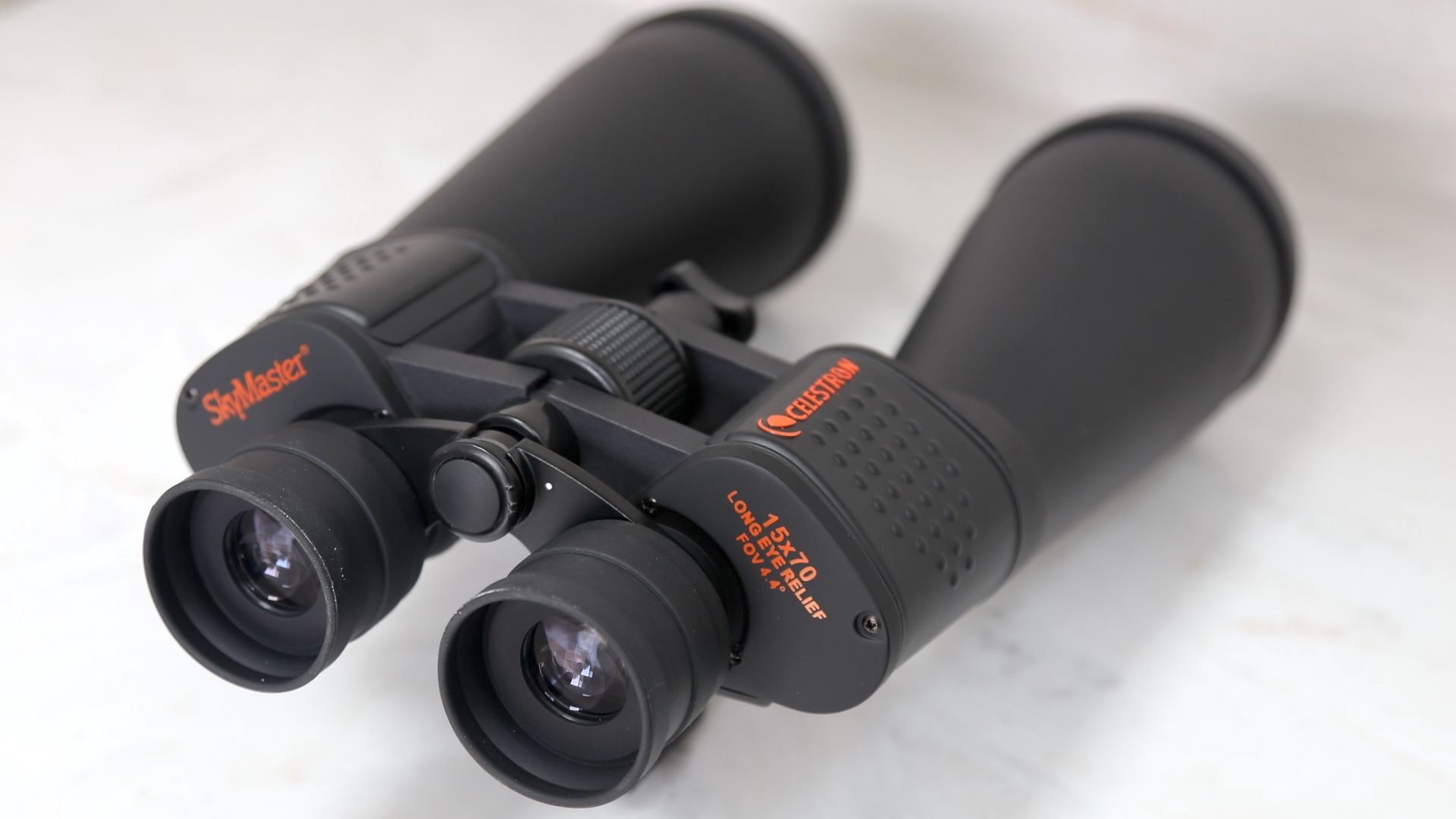
Specifications
Reasons to buy
Reasons to avoid
✅ You don't mind heavy: These are very weighty at 1.36kg, but are rock-solid
✅ You love star gazing: With a huge 15x magnification these are perfect for looking up at the stars
❌ You want to handhold: These are best mounted on a tripod to have your neck and keep them steady at all times
❌ You want compact: These are very large binos, so you won't be putting them in your pocket anytime soon
Binoculars are a great alternative to a traditional telescope for observing the night sky, as long as they have enough magnification. These incredibly well-priced Celestron binos have a huge 15x magnification which can help you to observe galaxies, planets, and lunar details. They also offer a good amount of eye relief for spectacle-wearers.
We had the summer constellations available to view at the time of testing, and enjoyed some lovely views of Cygnus, the Swan, as well the surrounding stars, and were able to check out the M81 and M82 galaxies, which wouldn’t be possible with lower-magnification binos. In fact, they get so close that it’s helpful to have some knowledge of the night sky already, so you can find your way around with these optics.
In my tests, you can just about handhold them, but they are much better used with a tripod - and very conveniently they provide you with a binocular tripod adaptor that simplifies attaching them to three-legged support.
Read our full Celestron Skymaster 15x70 review for more details
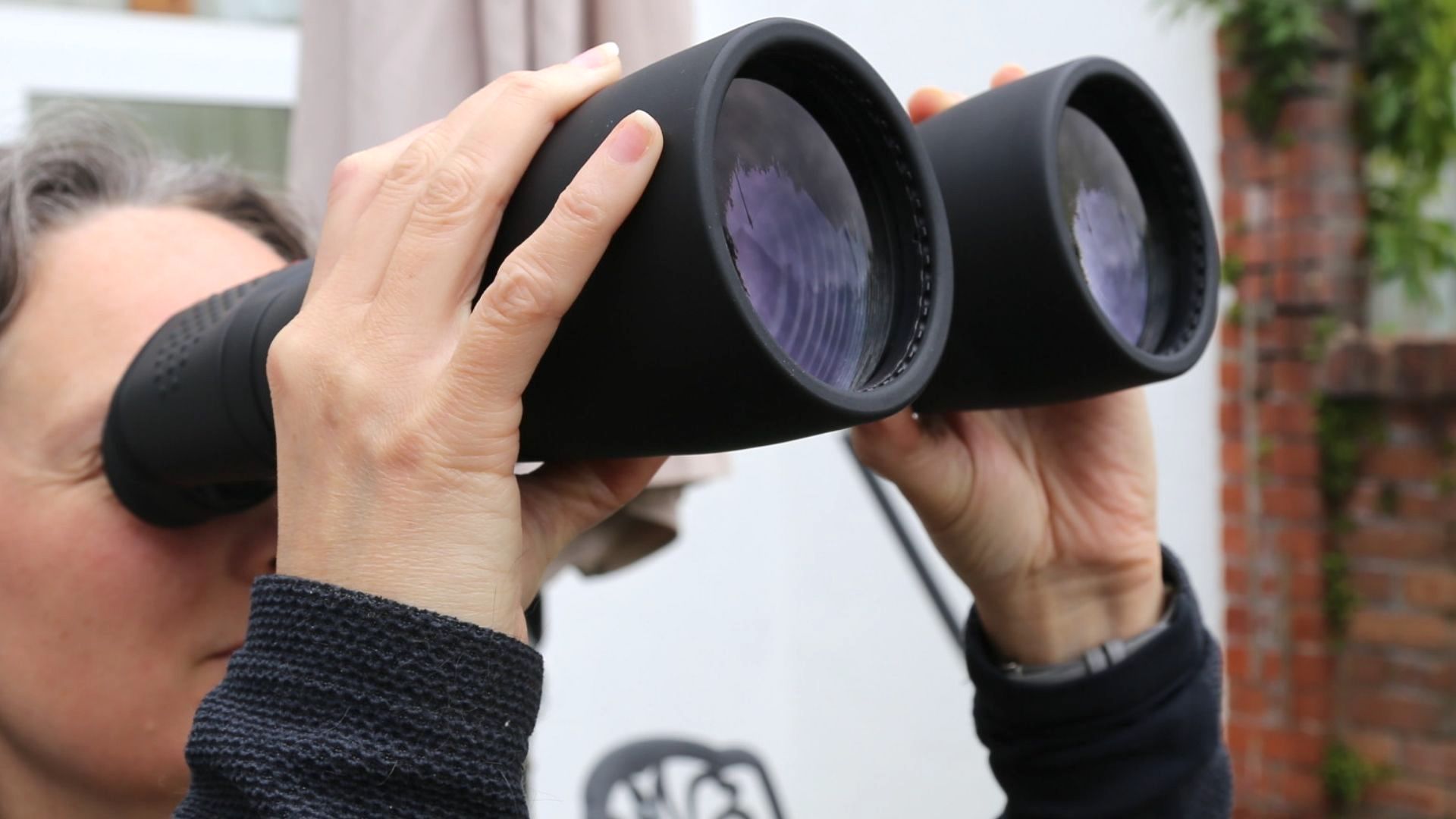
| Row 0 - Cell 0 | Row 0 - Cell 1 | Score |
Optics | With outstanding optical performance these are the perfect binos for stargazing | ★★★★½ |
Features | High 15x magnification, solid build, make these a weighty option, but the features out-weight the heft | ★★★★ |
Value | For their price the outperfrom anything within the price range, and category | ★★★★★ |
Best binoculars for sailing
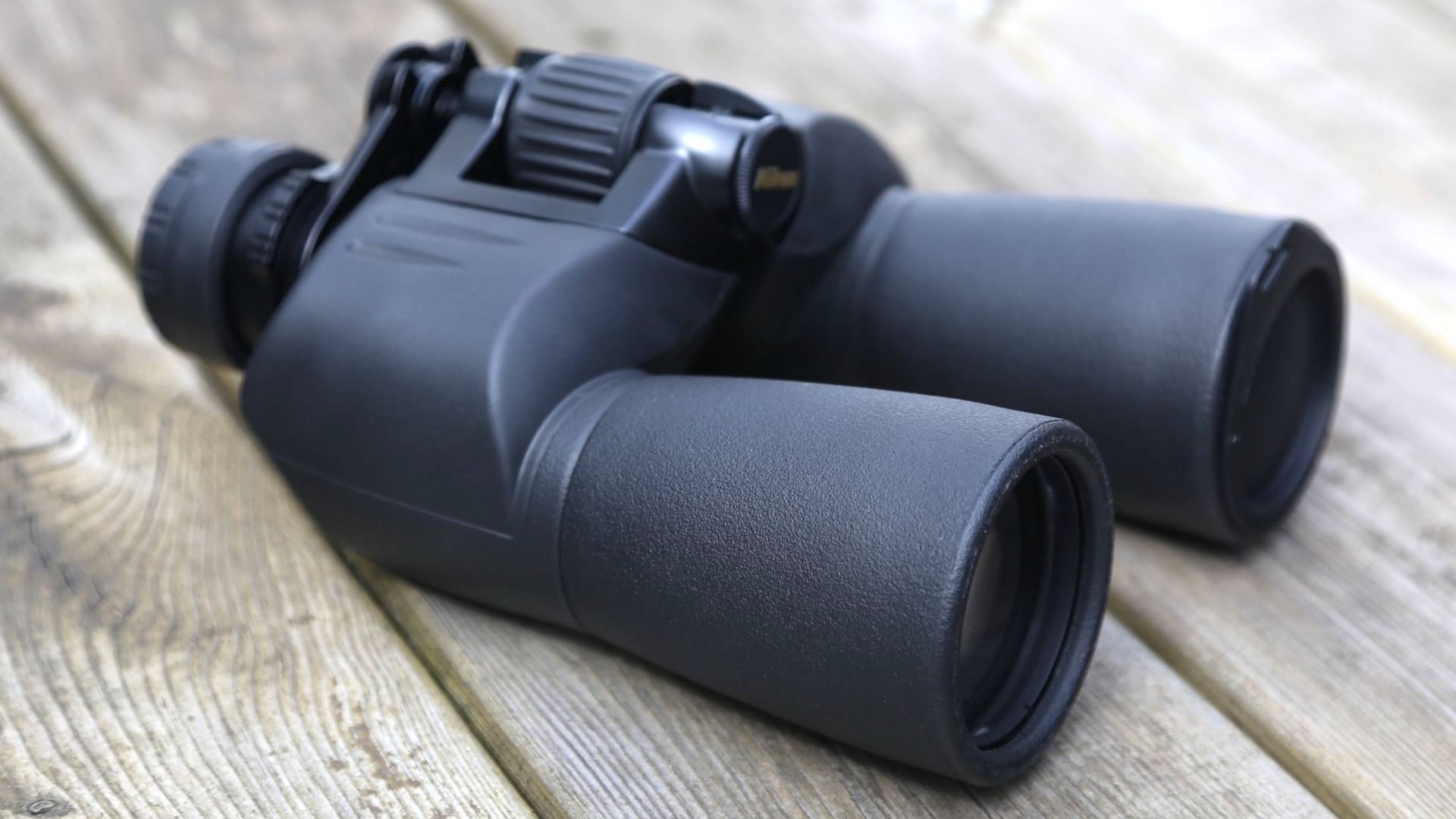
Specifications
Reasons to buy
Reasons to avoid
✅ You love sailing: With strong waterproofing and fog-proof design these are perfect to take to the open sea
✅ You want high magnification: With 12x magnification these binos offer far-reaching conversation in a relatively small package
❌ You want to view for long periods: Due to being rather heavy binos a tripod is advised for longer observations
❌ You want amazing clarity: Unfortunately, on testing, we noticed some edge distortion which could put you off
The Nikon Action EX 12x50 is a great value combination of high power and light-gathering while you're on the ocean either fishing or sailing. If you want to get even closer to objects then look for binoculars with 16x magnification – and prepare to always use a tripod – but I think 12x is a worthy upgrade from 10x binoculars without hugely adding to the weight.
Unlike some other 12x binos, however, these aren’t particularly great for focusing on nearby objects, with a close-focus rating of seven meters (23ft), so forget about these for back-garden viewing.
What makes them good for sailing is their weather protection, with waterproofing and textured grips offering reassurance while you use them in the wet. And accidents can happen anywhere, so it’s good to know that they are shock-resistant as well.
Yes, the Nikon Action EX 12x50 binos are heavy, but the extra power they offer (and for very little extra outlay) alongside their rugged design and clean, crisp and colorful images make them a great option while sailing the open ocean for observing your objective.
Read our full Nikon Action EX 12x50 review for more details
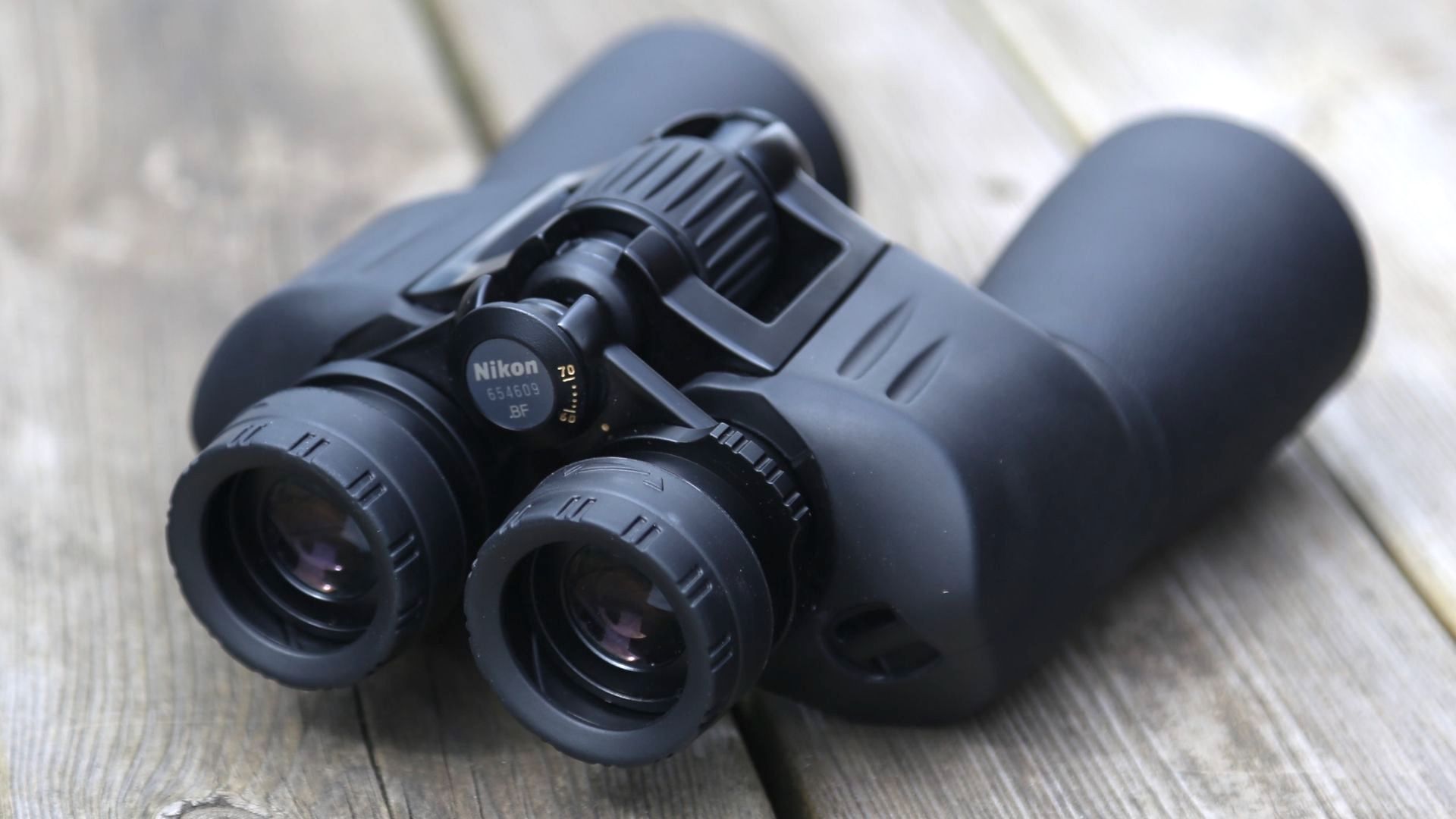
| Row 0 - Cell 0 | Row 0 - Cell 1 | Score |
Optics | Good optics that offer clear free far-reaching observations on the high seas, but you can expect a little distortion in the corners | ★★★★ |
Features | With great waterproofing and ant-fog technology you can be use you can also spot your next sailing point with easy | ★★★★ |
Value | They are priced well for the features they offer, but cheaper option are smaller if bulk is an issue | ★★★★ |
Best cheap binoculars
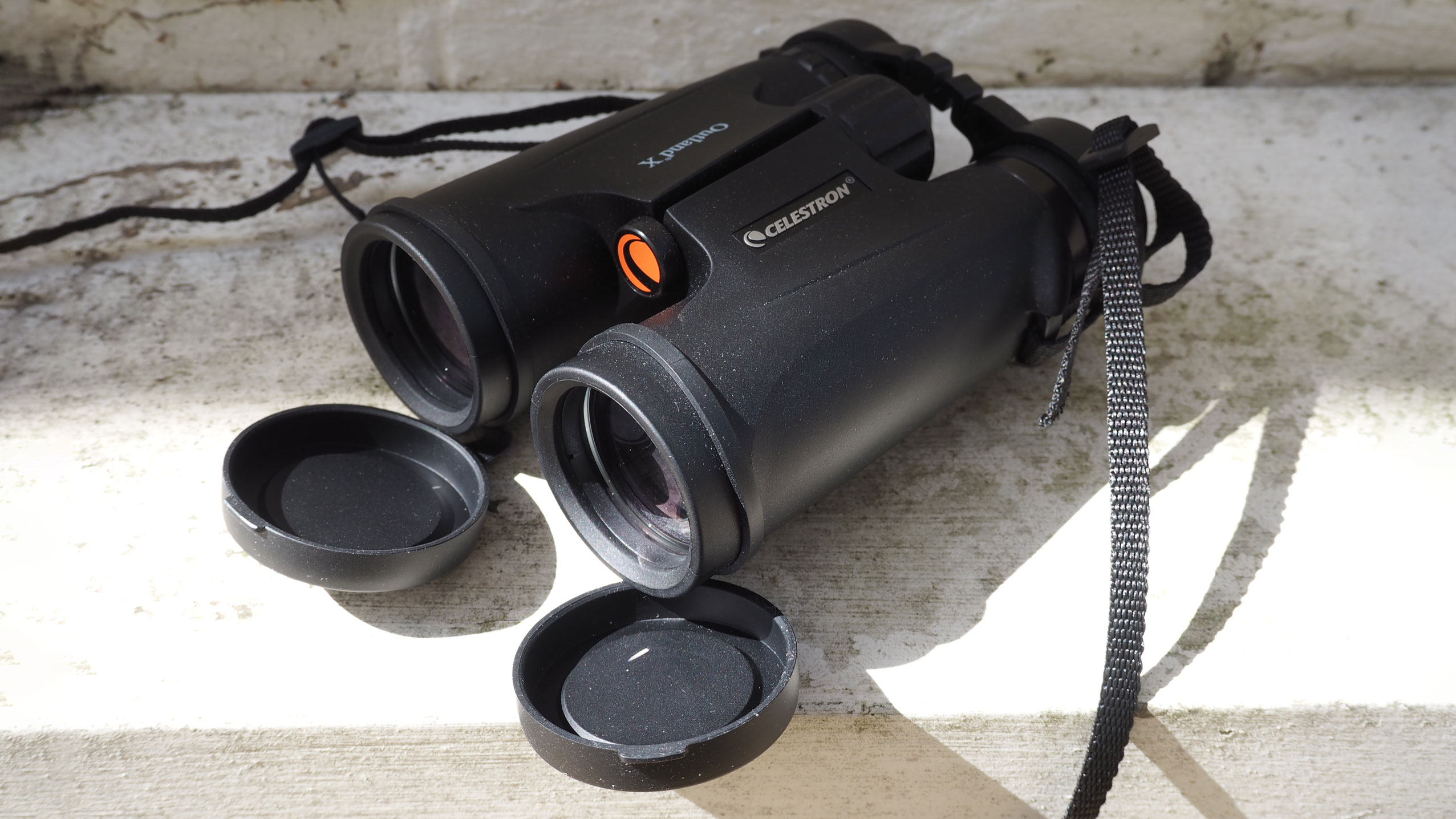
Specifications
Reasons to buy
Reasons to avoid
✅ You want a great all-rounder: great for birdwatching, these binos are also perfect for all kinds of observations
✅ On a strict budget: At under $100/£100 these are incredible value for the money
❌ You want lightweight: At 624g these aren't the lightest around, but they are better than most
❌ You want something small: They are built to fit several uses, so size is in the mid-range spectrum
The Celestron Outland X 8x42 binoculars are a fantastic bargain, offering 8x magnification and BaK-4 prisms for bright, sharp views. With multi-coated optics, they ensure minimal glare and maximum clarity, making them ideal for birdwatching, wildlife observation, and general outdoor use.
This model is part of the versatile Outland X series, which comes in other magnifications and sizes to suit various needs. Built with a sturdy polycarbonate body and waterproofing, these binoculars are designed to handle rugged outdoor conditions, from forest hikes to riverside outings.
The 42mm objective lenses gather plenty of light, making these binoculars suitable for low-light conditions like early mornings or twilight. A large, smooth-focus wheel allows for quick adjustments, and the 18mm eye relief ensures comfortable use, even for those who wear glasses.
These binoculars are tripod-compatible, making them perfect for extended observation sessions. Celestron includes thoughtful extras like a strap, lens cloth, carry case, and a limited lifetime warranty, ensuring you have everything you need for long-lasting use.
For those seeking reliable, versatile binoculars without overspending, the Celestron Outland X 8x42 is a top choice. Whether you’re spotting birds, tracking wildlife, or simply enjoying the view, these binoculars deliver excellent performance at an affordable price.
Read our full Celestron Outland X 8x42 review for more details

| Row 0 - Cell 0 | Row 0 - Cell 1 | Score |
Optics | For their price and ability the optics out perform our expectations | ★★★★½ |
Features | Packing a modest 8x magnification and being of solid construction these bino offer a great "all-round" feature to suit many types of observations | ★★★★ |
Value | Extremely cheap for what they offer, these binos are a great buy for anyone looking to have a great all-round experience with binos | ★★★★★ |
How to choose the best binoculars
What do the numbers, such as 8x42 and 12x50, mean on binoculars?
Binoculars come in various specifications, but two key aspects matter most: magnification and lens size. These are typically indicated in the model name, such as 10x20 or 6x30. The first number represents magnification - how much closer objects appear - while the second denotes the objective lens diameter in millimeters.
Higher magnification might seem better, but it narrows your field of view, making it harder to track moving subjects. It also amplifies hand movements, often requiring a tripod or image stabilization for steady viewing.
The objective lens size determines light-gathering ability. Larger lenses produce brighter, clearer images, especially in low-light conditions, but they also make binoculars bulkier and more expensive. Finding the right balance between magnification and lens size depends on your needs.
To gauge low-light performance, divide the lens diameter by the magnification to get the exit pupil size. For instance, 10x20 binoculars have a 2mm exit pupil, while 6x30 binoculars have a 5mm exit pupil. For use in dim conditions, such as dusk or overcast days, an exit pupil of at least 5mm is recommended for optimal visibility.
What are the best binoculars?
If budget isn't a concern and you’re looking for the best optical quality available, the Swarovski CL Companion 8x30 compact binoculars are an outstanding choice. They offer crystal-clear vision, allowing you to observe wildlife from as close as 3 meters to as far as 132 meters with exceptional clarity.
Best binoculars for beginners?
The Nikon Prostaff P3 binoculars are entry-level and we were impressed when reviewing them. Nikon has saved on manufacturing costs where it counts, mainly in the accessories that these binoculars ship with, but has retained the high-quality optics that I expect to see in a Nikon product.
How we test binoculars
The top binoculars are rigorously field-tested for image quality, portability, durability, and suitability for various activities, including astrophotography, sports, wildlife observation, and marine use.
Optical performance is evaluated in all weather conditions. On sunny days, we assess clarity, sharpness, and any image fringing, while overcast conditions help us gauge lens brightness and eye relief. To ensure reliability, we also test construction and weather resistance in challenging environments - so you can be confident you're getting the best recommendations.
Get the Digital Camera World Newsletter
The best camera deals, reviews, product advice, and unmissable photography news, direct to your inbox!

For nearly two decades Sebastian's work has been published internationally. Originally specializing in Equestrianism, his visuals have been used by the leading names in the equestrian industry such as The Fédération Equestre Internationale (FEI), The Jockey Club, Horse & Hound, and many more for various advertising campaigns, books, and pre/post-event highlights.
He is a Fellow of the Royal Society of Arts, holds a Foundation Degree in Equitation Science, and holds a Master of Arts in Publishing. He is a member of Nikon NPS and has been a Nikon user since his film days using a Nikon F5. He saw the digital transition with Nikon's D series cameras and is still, to this day, the youngest member to be elected into BEWA, the British Equestrian Writers' Association.
He is familiar with and shows great interest in 35mm, medium, and large-format photography, using products by Leica, Phase One, Hasselblad, Alpa, and Sinar. Sebastian has also used many cinema cameras from Sony, RED, ARRI, and everything in between. He now spends his spare time using his trusted Leica M-E or Leica M2, shooting Street/Documentary photography as he sees it, usually in Black and White.
